
Sugar Regulatory Administration



Sugar Regulatory Administration


I am delighted to present the Sugar Regulatory Administration’s FY 2023 Annual Report. This report emphasizes SRA’s commitment in building a resilient, sustainable, and competitive sugarcane industry. It narrates a comprehensive overview of the industry’s achievements, SRA’s programs and activities’ milestones and our key strategies in advancing the competitiveness of the Philippine Sugarcane Industry.
Despite the considerable challenges and events of 2023, the sugarcane industry remained unwavered and instead, showcased exceptional resilience and adaptability while achieving notable enhancements in production efficiency. Our dedicated and innovative farmers, stakeholders in the private sector and partner government agencies have played a pivotal role in maintaining the stability and improvement of domestic sugar production and supply. The industry’s focus on innovation, sustainability, and collaboration has been instrumental in staying resilient despite the headwinds that we have faced.

The collective efforts of industry players have surpassed the previous crop year’s performance in terms of sugar yield per hectare (LKg/Ha) and sugar yield per tons cane (LKg/TC). The crop year 2022-2023 that ended in August this year recorded a productivity level of 94.51 LKg/Ha and 1.76 LKg/TC compared to previous crop year’s 92.29 LKg/Ha and 1.71 LKg/TC, respectively. In addition, the sugar policies that were formulated and implemented by SRA not only stabilized the supply of sugar in the domestic market, but also mitigated the impact of inflation on sugar prices and maintained the required volume of buffer stock of sugar.
Further, the year in review has also been significant for SRA because we were able to forge international collaboration marked by technical mission to Brazil to explore the country’s production technologies, both in sugar and bioethanol sector. Finally, farm machineries, such as tractors, flail mowers, mechanical planters and power harrows from Japan thru the Japan Non-Project Grant Aid Program (NPGA) have arrived and were distributed to planters’ associations and foundations as beneficiaries. The machinery grant augments the inventory of farm mechanization equipment in the industry that will somehow address the inadequate supply of manual labor in sugarcane farms.
In preparation for the El Niño phenomenon, the SRA has already laid out its mitigation and recovery plans. The SRA created awareness about its possible impact to the growth of sugarcane crop through climate forum regularly conducted for stakeholders, in coordination with Philippine Atmospheric, Geophysical and Astronomical Services Administration (PAGASA). A substantial budget was also appropriated for the distribution of irrigation facilities such as shallow tube wells, pumps and engines to sugarcane farmers, and automated weather stations (AWS) and soil moisture content sensors are set for installation to sugarcane milling districts all over the country.
I extend my heartfelt gratitude to all our partners, stakeholders, and all SRA’s employees for their unwavering support and dedication towards building a more sustainable and a thriving future of the Philippine Sugarcane Industry. MARAMING SALAMAT PO AT MABUHAY ANG MASAGANANG BAGONG PILIPINAS!



The Sugar Regulatory Administration (SRA) was created by virtue of Executive Order No. 18, series of 1986, which declares it the policy of the State to promote the growth and development of the sugar industry through greater and significant participation of the private sector and improve the working conditions of laborers.
Under Republic Act (RA) No. 9367 (Biofuels Act of 2006), the SRA, as a member of the National Biofuel Board (NBB), was mandated to ensure security of domestic sugar supply while developing and implementing policies supporting the Philippine Biofuel Program
It is also mandated under, RA 10659 or the Sugarcane Industry Development Act of 2015 (SIDA) to promote the competitiveness of the sugarcane industry and maximize the utilization of sugarcane resources, and improve the incomes of farmers and farm workers, through improved productivity, product diversification, job generation, and increased efficiency of sugar mills


By 2040, the Philippines shall have a globally competitive sugarcane industry that supports the food, power and other related industries through an institutionally competent and SRA and committed stakeholders, for a secured future for Filipinos.
SRA’s mission is to formulate responsive development and regulatory policies, and provide RD & E services to ensure sufficient supply of sugarcane for a diversified, sustainable and competitive industry that improves productivity and profitability of sugarcane farmers and processing industries, and provides decent income for workers towards enhancing the quality of life of Filipinos.
SRA’s core values are Patriotism, Integrity, Excellence, Spirituality, Professionalism and Accountability
V I S I O N
B y 2 0 4 0 , t h e P h i l i p p i n e s s h a l l h a v e a s e l fs u f f i c i e n t s u g a r c a n e i n d u s t r y t h a t s u p p o r t s t h e f o o d , p o w e r , a n d

M I S S I O N
o t h e r r e l a t e d i n d u s t r i e s t h r o u g h a n i n s t i t u t i o n a l l y c o m p e t e n t S R A a n d c o m m i t t e d s t a k e h o l d e r s , f o r a s e c u r e d f u t u r e f o r F i l i p i n o s
i s a G o v e r n m e n t
S R A
O w n e d a n d C o n t r o l l e d
C o r p o r a t i o n w h i c h f o r m u l a t e s r e s p o n s i v e
d e v e l o p m e n t a l a n d
r e g u l a t o r y p o l i c i e s , a n d
s e r v i c e s
p r o v i d e s R D & E
M a i n t a i n b a l a n c e d s u g a r s u p p l y & d e m a n d r e q u i r e m e n t s
I m p l e m e n t p r oa c t i v e a n d e f f e c t i v e
p o l i c i e s a n d r e g u l a t i o n s
I m p r o v e d I n c o m eP r o f i t a b i l i t y a n d
S u s t a i n a b l e P r o d u c t i v i t y o f t h e
S u g a r c a n e I n d u s t r y
S u s t a i n t h e D e v e l o p m e n t o f
E x p e r t i s e a n d H u m a n R e s o u r c e s i n t h e F i e l d o f S u g a r c a n e I n d u s t r y
D e v e l o p m e n t & R e l a t e d A r e a s
M a i n t a i n s o u n d F i n a n c i a l M a n a g e m e n t
T r a n s p a r e n c y and 2023-2040
I m p a c t E m p o w e r e d I n d u s t r y s i g n i f i c a n t l y
S o c i oE c o n o m i c
c o n t r i b u t i n g t o f o o d s e c u r i t y & p o v e r t y r e d u c t i o n
S t a k e h o l d e r s
t o e n s u r e s u f f i c i e n t
s u p p l y o f s u g a r c a n e f o r a
d i v e r s i f i e d , s u s t a i n a b l e
a n d c o m p e t i t i v e i n d u s t r y
t h a t i m p r o v e s p r o d u c t i v i t y
a n d p r o f i t a b i l i t y o f
s u g a r c a n e f a r m e r s a n d
T e c h n i c a l A s s i s t a n c e a n d E x t e n s i o n
r o c e s s e s P r o v i d e r e s p o n s i v e R e s e a r c h ,
I n t e r n a l
S e r v i c e s t o S u g a r c a n e I n d u s t r y
S t a k e h o l d e r s
p r o c e s s i n g i n d u s t r i e s , a n d p r o v i d e s d e c e n t
i n c o m e f o r w o r k e r s t o w a r d s e n h a n c i n g t h e
q u a l i t y o f l i v e s o f F i l i p i n o s .
L e a r n i n g &
G r o w t h
F i n a n c i a l
S t e w a r d s h i p
CORE VALUES
P a t r i o t i s m I n t e g r i t y
E x c e l l e n c e
E n a b l i n g C o m p e t i t i v e n e s s
T h e m e
S p i r i t u a l i t y P r o f e s s i o n a l i s m A c c o u n t a b i l i t y
C o m p o n e n t ( O b j e c t i v e & M e a s u r e ) T a r g e t A c t u a l

C o m p o n e n t
( O b j e c t i v e & M e a s u r e ) T a r g e t A c t u a l
S t r a t e g i c O b j e c t i v e 5 . E n f o r c e a n d I m p l e m e n t P r oA c t i v e
a n d E f f e c t i v e P o l i c i e s , R u l e s a n d R e g u l a t i o n s
S M 9 . P e r c e n t a g e o f C o m p l i a n c e t o S R A P o l i c i e s , R u l e s a n d R e g u l a t i o n s b y M i l l e r s & T r a d e r s 1 0 0 % 9 4 . 0 5 %
S t r a t e g i c O b j e c t i v e 1 . E m p o w e r e d I n d u s t r y S i g n i f i c a n t l y
C o n t r i b u t i n g t o F o o d S e c u r i t y & P o v e r t y R e d u c t i o n
S M 1 . P r o d u c t i v i t y / Y i e l d p e r H e c t a r e
( t c / h a ) 5 3 5 3 . 7 1
S t r a t e g i c O b j e c t i v e 6 . S u s t a i n t h e D e v e l o p m e n t o f E x p e r t i s e & H u m a n R e s o u r c e s i n t h e F i e l d o f S u g a r c a n e I n d u s t r y ,
D e v e l o p m e n t & R e l a t e d A r e a s
S M 2 . S u g a r P r o d u c t i o n ( M M T ) 2 . 0 0 1 1 . 7 9 9
S M 3 . A v e r a g e I n c o m e p e r H e c t a r e o f
B l o c k F a r m s ( P h p ) 8 0 , 0 0 0 1 7 8 , 6 6 1 . 2 8
S M 1 0 . P e r c e n t a g e o f P e r s o n n e l w i t h R e q u i r e d C o m p e t e n c i e s M e t I m p r o v e m e n t f r o m t h e b a s e 8 8 . 3 4 %
S t r a t e g i c O b j e c t i v e 2 . M a i n t a i n e d B a l a n c e d S u g a r S u p p l y &
D e m a n d R e q u i r e m e n t s
P a s s e d 1 s t S u r v e i l l a n c e A u d i t P a s s e d 1 s t S u r v e i l l a n c e A u d i t
S M 1 1 . I S O 9 0 0 1 : 2 0 1 5
C e r t i f i c a t i o n
S M 4 . V o l u m e o f B u f f e r S t o c k ( M T ) 2 4 0 , 0 0 0 3 2 6 , 6 5 5
S t r a t e g i c O b j e c t i v e 3 . I m p r o v e d I n c o m e , P r o f i t a b i l i t y ,
G l o b a l C o m p e t i t i v e n e s s a n d S u s t a i n a b l e P r o d u c t i v i t y o f
t h e S u g a r c a n e I n d u s t r y
S t r a t e g i c O b j e c t i v e 7 . M a i n t a i n S o u n d F i n a n c i a l
M a n a g e m e n t S M 1 2 . E B I T D A M a r g i n 1 6 % 6 2 . 1 4 %
S M 5 . P e r c e n t a g e o f S a t i s f i e d C u s t o m e r s 9 0 % 9 1 . 9 3 %
S M 6 . N u m b e r o f S u g a r c a n e B l o c k
S M 1 3 . B u d g e t U t i l i z a t i o n R a t e
F a r m s M a d e O p e r a t i o n a l i z e d 2 1 2 1
. S u b s i d y a 1
b l i g a t i o n R a t eC u r r e n t 9 0 % 7 1 % a . 2 O b l i g a t i o n R a t eC a r r yo v e r 9 0 % 1 0 0 % b D i s b u r s e m e n t R a t e b . 1 D i s b u r s
c . D i s b u r s e m e n t o f I n t e r n a l l y g e n e r a t e d F u n d s ( I G F ) 9 0 % 5 1 . 8 7 %
S M 7 . N u m b e r o f S c h o l a r s E n r o l l e d 7 0 0 7 0 6
S t r a t e g i c O b j e c t i v e 4 . P r o v i d e R e s p o n s i v e R e s e a r c h , T e c h n i c a l A s s i s t a n c e a n d E x t e n s i o n S e r v i c e s t o S u g a r c a n e I n d u s t r y S t a k e h o l d e r s
S M 8 : N u m b e r o f c o m p l e t e d p r o j e c t s a . U n d e r t h e B r e e d i n g P r o g r a m 3 1 3 3
b . P r o d u c t i o n T e c h n o l o g y P r o j e c t s 2 0 1 0
c . R D E P r o j e c t s I m p l e m e n t e d 2 1 2 1
In Crop Year 2022-2023, total sugarcane area stands at 384,486 hectares, a 2 5% decrease from the previous crop year 2021-2022 where total sugarcane milled was produced from 394,637 hectares This notable decline is attributed to conversion of sugarcane farms to other competing crops and non-agricultural uses Some sugarcane farmers opted to pursue diversification strategies, transitioned towards alternative crops or other land utilization practices to mitigate risks in farming and optimize profitability Most of the sugarcane areas located in mill districts in Luzon/Mindanao has significantly decreased in size in CY 2022-2023 like Carsumco, Balayan, Don Pedro and Bukidnon.
Distribution of Sugarcane Areas by Major Island (hectares)
2022-2023
By Major Island

The total cane production was 20,458,759 metric tons for crop year 2022-2023, indicating a 3.65% decrease compared to the previous crop year Despite the reduction in sugarcane areas and sugarcane production, a modest enhancement in the farm sector's productivity is evident in terms of sugar output per hectare (LKG/Hectare), as illustrated in the table This improvement in farm performance can be attributed to the sustained Research and Development (R&D) initiatives by the Sugar Regulatory Administration (SRA), along with the delivery of extension services actively shared by both the SRA and the private sector, the Mill District Development Councils (MDDC's) and implementation of SRA's flagship program, the Sugarcane Industry Development Act of 2015 (SIDA) These concerted efforts aimed to enhance the welfare of the sugarcane industry and contribute to the sector's overall productivity


Source: Regulation Department, Sugar Production Bulletin
for crop year
tons This is a 1 19% short of the production estimate for the crop
to
Raw sugar withdrawals. Raw sugar withdrawal has decreased to 1,748,403 metric tons, notably lower than the 1,939,658 metric tons recorded in CY 2021-2022 The decline in consumption can be attributed to various factors, including dietary changes among consumers, the increased popularity of alternative sweeteners and the utilization of premixes in beverage industries, such as high fructose corn syrup These factors collectively contribute to the shifting landscape of cane sugar consumption patterns.
There is also a marked decrease in withdrawals of refined sugar compared to previous crop year which can be explained by sugar importation program during the crop year.
and
Imports. For crop year 2022-2023, through the Sugar Import Program, the total volume of imported refined sugar which arrived in the country was 788,726 26 metric tons and 10,000 metric tons of raw sugar The Sugar Import Program for crop year 2022-2023 was enforced by Sugar Order Nos 2, 6 and 7, Series of 2023, and Department of Agriculture-Minimum Access Volume (MAV) 2023 as per Memorandum Circular No 5, that aims to augment the domestic sugar supply and stabilize local prices at reasonable levels
Sugar Import Program
Enabling Policy

Exports. The Philippines historically exports sugar to the United States and to other countries From CY 20182019 to CY 2020-2021, the country was able to ship its export commitment to the United States But due to a low sugar output in CY 2021-2022 and estimate low sugar production in CY 2022-2023, the SRA allocated 100 percent of raw sugar production to the domestic market or “B” sugar
Demand Sugar withdrawals for both raw and refined sugars experienced a slump During crop year 2022-2023 demand for raw sugar declined by 9 86% or 191,255 metric tons whereas, demand for refined sugar also slacked by 39% or 338,682 metric tons as shown in the table below The possible reason for the drop was due to the build-up of imported raw and refined sugars

PRICES: MILLSITE SUGAR

Composite price of raw sugar in millsite rose by more than 50% in 2022-2023, as compared in CY 20212022 This is attributed to low sugar output during the crop year
Due to high demand for molasses from the bioethanol sector, millsite price of molasses also show an increasing movement save for Crop Year 2020-2021 where demand is low due to the Covid-19 pandemic
and Retail (Supermarket/Grocery)

The increasing trend of average wholesale and retail prices of sugar in Metro Manila supermarkets started in the late part of CY 2021-2022 Selling price of refined sugar per kilogram was monitored at P67 04 which exceeded the comfortable SRP of P50-55/kg
In CY 2022-2023, wholesale price of refined sugar ranged from Php4,100 00 to Php4,800 00 per 50-kilo bag while retail price of refined sugar in the wet market ranged from Php95 00 – Php100 00 per kilogram and Php70 00 - Php106 00 in groceries and supermarkets This high-priced sugar sold in wholesale and retail outlets was an off-shoot of low sugar production during the crop year





13
Operational Bioethanol Distilleries
Mandated gasoline blend 10 %
456 million Liters 396.9 million Liters
Annual Production Capacity
Actual Bioethanol Produced
13,353.76 ha.
Total sugarcane area for Bioethanol Production
Batangas - 5,778.2 ha.
Isabela - 5,088.46 ha.
Negros Occidental - 2,489.10 ha.
1.34 metric tons
705,214 metric tons Php 82.07
Molasses Feedstock Utilized
Sugarcane Feedstock Utilized
Average Bioethanol Price Index
The SRA, as a member of the National Biofuels Board and its Bioethanol Committee is tasked to publish the bioethanol reference price (BRP), a bimonthly price index for bioethanol computed based on the millsite national average composite price of sugar and average price of molasses in Negros.
The table in the left side shows the BRP for CY 2022-2023.
The Block Farm Program consolidates small farms, including farms of agrarian reform beneficiaries, within two-kilometer radius, into one larger farm but the ownership of each small farm remains with the landowners The minimum size of one block farm is thirty (30) hectares The program aims to take advantage of the economies of scale in the production of sugarcane, align the activities of the small farms to ensure the efficient use of farm machinery and equipment and deployment of workers, purchase of inputs in volume, and other operational advantages. The block farms are entities recognized by sugar mills, government financial institutions and other private investors for financing.
Number of Block Farms Organized and Operationalized

In 2023, there were 21 block farms identified and validated as eligible to receive interventions from the program. A total of P166,224,000.00 was appropriated for block farm program in the General Appropriations Act of 2023 for SIDA. As of December 31, 2023, there were a total of 266 organized block farms which have received interventions. In Luzon and Mindanao, there were 106 organized block farms with a total of 2,846 enrollees and a total area of 4,906.20 hectares while in Visayas, there were 160 organized block farms with a total of 4,514 enrollees and a total area of 5,363.43 hectares.

Start-up capital is provided to block farms for the purchase of agricultural inputs such as canepoints, organic/inorganic fertilizers and lime, and farm tractor services for land preparation, cultivation and other various farm labor activities. The provision of start-up capital to block farms is integral in ensuring successful crop establishment. In 2023, a total of P44,850,000 was allocated for provision of start-up capital to block farm beneficiaries.

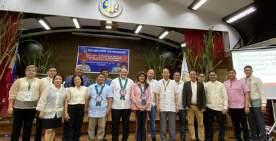
The SRA, through the Extension Services Division, distributed additional farm machinery and equipment to beneficiaries of the SIDA Block Farm Program in order to promote economic growth and intensify adoption of modern, appropriate, cost-effective, and environmentally-safe agricultural machineries and equipment, as well as to strengthen the support services provided for our farmers -
Luzon and Mindanao:






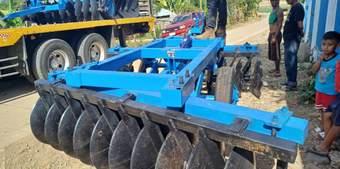


The establishment of food house is a livelihood program for the block farm beneficiaries The main purpose of the project is to provide a food source and an alternative source of income to the block farm members It also promotes good agricultural practices for crop production and animal raising The food house project is integrated to the SIDA Block Farm Program to promote adaptive technologies, cushion the impacts of the changing climate to food security and establish a diversified agriculture-based livelihood Food house materials distributed to block farms include chickens, gardening tools, organic and inorganic fertilizers, and various vegetable seeds The number of block farms that received food house materials in 2023 is indicated in the table below:
Luzon and Mindanao: Visayas:

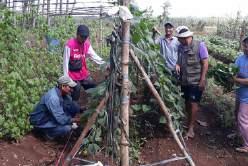




4.
5.
6.
The Infrastructure Program is one of the productivity enhancement programs under SIDA The program involves construction of farm to mill roads and bridges which aims to reduce post-harvest losses and enhance the timely delivery of sugarcane and other and other sugarcane products to sugar mills, distilleries, and other processing facilities
The SRA implements this program thru the Department of Public Works and Highways (DPWH) The yearly appropriation to SIDA-Infrastructure Program is directly downloaded by the Department of Budget and Management (DBM) to the DPWH for the construction/rehabilitation/repair of the proposed infrastructure projects

480.8
Total budget appropriated for the construction of Farm to Mill Roads (FMR) under the 2023 SIDA General Appropriations Act (GAA)

P19.2 million million

26.71 kilometers
total length of the farm-to-mill roads (FMR) to be constructed in 38 locations
Budget allocated for the construction of bridge in Bago City, Negros Occidental , Region VI
The proposed length of bridge is 20.0 meters The implementation will be under DPWH Negros Occidental 4th District Engineering Office
SUMMARY OF 2023 FARM TO MILL ROAD (FMR) PROJECTS PER REGION
REGION NO. OF SITES
II 2
III 2
PROJECT SITE
Sitio Malasat, Sto Domingo to Sta Barbara, Piat, Cagayan
Villa Ancheta to Sitio Lapak, Brgy Old San Mariano, Isabela
LENGTH (km)
0
Brgy. San Antonio, Arayat, Pampanga 0
Brgy. Tejero, San Luis, Batangas
Brgy Talon, San Luis, Batangas
Brgy Talon, San Luis, Batangas
San Martin, Concepcion, Tarlac IV-A 5
Brgy Talon, San Luis, Batangas
Brgy Cumba, Lian, Batangas


2023 FARM TO MILL ROAD (FMR) PROJECTS PER REGION

REGION NO OF SITES
V 1 Zone 3, Brgy Pawili, Bula, Camarines Sur
Crossing Luguay- Brgy Hawaiian, Silay, Negros Occidental
So Binolwangan-So Patag Duitay, Brgy Guimbala-on, Silay, Negros Occidental
Brgy. Abu-abo, Murcia to Brgy. Buenavista, Murcia, Negros Occidental
Had De Fuego 1, Brgy Dos Hermanas, Talisay City to Had Bagacay, Brgy Sto Rosario / Bagtic, Silay City
Sitio Tonggo to Brgy Mambagaton, Himamaylan, Negros Occidental
Had España to Brgy Cabcab, Isabela, Negros Occidental
From Brgy. Pinggot, Ilog to Sitio Cogon, Brgy. Gatuslao, Ilog, Negros Occidental
CONSTRUCTION OF BRIDGE
From Km 12, Brgy, Dancalan to Sitio Ga-id, Brgy Mambugsay, Ilog Negros Occidental
REGION NO OF SITE PROJECT SITE LENGTH (Meters)
19
Brgy Dian-ay Proper to Sitio Mudrock, Escalante City Road Section (Continuation)
Bangga Gerard, Brgy. Bato, Sagay City Road Section
VI 1
VII 5
Zamora to Hda Pio, Pontevedra, Negros Occidental
Cabura Bridge, Sitio Cabura, Brgy. Dulao, Bago City 20.00
Brgy Cambarus Proper to Purok 6, Brgy Cambarus, Pontevedra, Negros Occidental
Bangga Had. San Luis to Had. Uychiat Road Section, Brgy. Lopez Jaena, Sagay City
Had Maya, Sitio Camungguhan, Brgy Cabahug, Cadiz City Road Section (Continuation)
Hda Da-u to Hda Tres Hermanos of Brgy Luna, Cadiz City, Negros Occidental
Sitio Paho Road, Brgy Teresa, Manapla, Negros Occidental
Crossing Igmamatay to Sitio Igmamatay, Brgy.Codcod
Brgy Banate Road ,Pontevedra, Capiz (Continuation)
Sitio Proper to Sitio Compound, Brgy Jaguimitan Road, Passi City, Iloilo
Sitio Omod to Sitio Ayum, Brgy. Maninihon, Bayawan City, Negros Oriental
Brgy Bagtic, Mabinay, Negros Oriental - Sitio Mampalasan, Brgy Bagtic, Mabinay, Negros Oriental
Brgy Samac, Mabinay, Negros Oriental - Sitio Bala-on, Brgy Samac, Mabinay, Negros Occidental
Brgy Pantao, Mabinay, Negros Oriental - Sitio Cansadya, Brgy Pantao, Mabinay, Negros Oriental
Junction National Highway- Brgy Caputatan Norte to Brgy Dalingding Sur Junction
Mainline National Highway - Brgy Panugnawan
2 986


Newly constructed Farm-to-Mill Road (FMR) from Hda Da-u to Hda Tres Hermanos in Brgy Luna, Cadiz City, Negros Occidental in Region VI The project was funded under the 2023 GAA



al length of farm-to-mill roads (FMR) are under nstruction with varying levels of completion in 30 site ations, under the 2023 GAA funding 3.42
kilometers
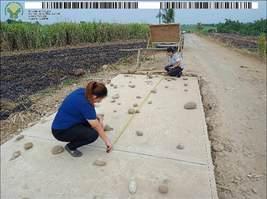


On-going construction of Hda. Maya, Sitio Camungguhan FMR, Brgy. Cabahug, Cadiz City, Negros Occidental as of December 2023.

The construction of a 20-meter bridge in Sitio Cabura, Brgy Dulao, Bago City, Negros Occidental is underway The supplies are already on-site, and the structure components have been prepared The budget allocation for this project is PhP19.2 million





total appropriation for the Infrastructure Program which includes Php 4.323 billion for the construction of 307 Farm-to-Mill Roads and Php 78.426 million for the 4 bridge projects. As of December 31, 2023, there are 270 farm to mill road projects with total length of 242.731 kilometers and three (3) bridge projects with a total length of 57 meters have been completely constructed. The two table below shows the completed FMR and bridge projects per GAA and per region:
CUMULATIVE ACCOMPLISHMENTS (2016 TO 2023 GAA)
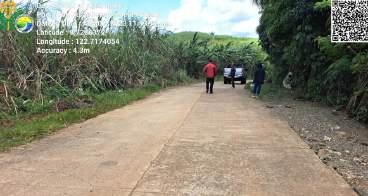
GAA 2017 - Brgy. Magballo, Kabankalan City to Sitio Montelo, Brgy Pinggot, Ilog - ( 0.72 km)
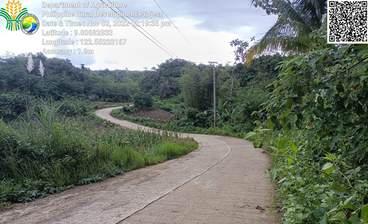
GAA 2018 - Brgy Camindangan National Highway to Sitio Calagmacan, Sipalay City, Negros Occidental ( 0 931 km)

GAA 2018 - Junction national highway-Brgy. Caputatan Norte to Brgy Daling- ding to junction mainline national highway, Brgy Panug-nawan, Medellin, Cebu (0.75 km)

GAA 2019 - Prenza Bridge, Brgy Prenza, Lian, Batangas ( 13 00 meters)

GAA 2019 - Brgy Tinang Bridge, Brgy Tinang, Concepcion, Tarlac ( 30.00 meters)

GAA 2019 - Brgy. Don Jorge Bridge,Bago City, Negros Occidental ( 14 00 meters)


The SRA, the Commission on Higher Education (CHED) and Technical Education and Skills Development Authority (TESDA), actively implements the Human Resource Development Program The industry’s organizations such as the Mill District Development Councils, mills, refineries, bioethanol distilleries, planters associations and block farms continue as SRA’s partners in increasing the number of professionals in several field of disciplines and upgrading the skills of sugarcane farmers and workers
The Scholarship Program is for the underprivileged but deserving college and postgraduate students who are taking up courses in relevant fields of discipline in SUCs such as agriculture, agricultural engineering and mechanics, and chemical engineering/sugar technology.
The Scholarship Program is one among the five components of the HRDP implemented by the two major agencies - the Commission on Higher Education (CHED) and the Sugar Regulatory Administration (SRA).

98.923 33 776 million for SRA
million
65.147 million for CHED total budget allocated for the Scholarship program under 2023 GAA. It covers the stipends and other allowances such as book and thesis allowance for undergraduate and graduate programs, and tuition and other school fees for the graduate programs.
158 SIDA scholars are currently rendering service to the Philippine sugarcane industry through their employment at SRA offices (Quezon City/ LAREC, Pampanga/LGAREC, Bacolod), Sugar Mills, Mill District Offices, and PHILSURIN. Other SIDA graduates are employed in State Universities and Colleges (SUC) and other private entities



The CHED and SRA were able to produce a total of two hundred thirty-four (234) graduates in 2023. Thirtyone percent (31%) of the graduates are from Region VI (Western Visayas), Region X has 21%, while Regions VII and IV-A both have 10% share in the total number graduates The rest are from other sugar-producing regions.
Fifty-six percent (56%) of the AY 2022-2023 graduates are Agriculturists, 25 % are Engineers, 25% are Chemists, and 4% are Sugar Technologists The remaining percentage are graduates of Financial/ Accounting Management and Biology These are the relevant courses indicated in Memorandum Circular 10, Series of 2023 Revised Guidelines for the Sugarcane Industry Development Act (SIDA) Undergraduate and Graduate Scholarship Program Under SRA as Implementing Agency Two hundred fifteen (215) of the graduates have Bachelor’s Degrees, and nineteen (19) have Master’s Degrees
PRIORITY/RELEVANT PROGRAMS

Semester, AY
In the second semester of AY 2022-2023, the SRA was able to fully fund its target of 298 scholars, while CHED was able to fund 94% of its 476 target scholars.
For the first semester of AY 2023-2024, the SRA have exceeded their target number of scholars to be funded by 132% This means that out of 171 target scholars, the SRA was able to fund 225 scholars On the other hand, the CHED funded 82% of its 588 target scholars
For the first semester of Academic Year 2023-2024, there are a total of 706 SIDA scholars under the implementation of SRA and CHED Out of these scholars, 66% are enrolled in Agriculture courses while 21% are taking up Engineering courses The remaining scholars are pursuing other courses that are related to the sugarcane industry, as specified in Memorandum Circular 10, Series of 2023




SRA: 82 CHED:194

276outof706 SIDAScholars aremale
SRA: 143 CHED:287 430outof706 SIDAScholars arefemale
The total appropriations provided by the National Government directly to
received PhP 562.715 million. The program has already produced a total of 857
The breakdown of appropriation received by the two agencies since program inception and the regional breakdown of graduates are shown below:

As part of the Human Resources Development Program outlined in section 6 of Republic Act No 10659, the SRA has successfully organized capacity building and skills training programs. These initiatives aim to strengthen the sugarcane industry workers, small farmers, agrarian reform beneficiaries, and their respective organizations. The goal is to enable them to make meaningful contributions to the productivity and competitiveness of the industry.
The BOF and BMO Production trainings were simultaneously conducted to maximize the time and for the farmers to benefit in learning both technologies in one venue The project was attended by 6,014 sugarcane farmers, and was conducted in the 16 Mill Districts in Visayas with the following objectives:
1 To promote sustainable crop production and to protect the environment, farmers will be trained on how to produce Bioorganic Fertilizer and BMO as additional source of nutrients
2 To help farmers address high cost of inputs, declining yields, degradation of soil structure and insufficient supply of quality bio-organic fertilizer.

BASIC SUGARCANE PRODUCTION TECHNOLOGY AND FARMING TECHNIQUES TRAINING FOR SMALL FARMERS, FARM WORKERS AND MANUAL CUTTERS
This is a component of the SIDA-HRDP being implemented by the Extension Services Division of RDE Luzon and Mindanao The program is a series of 5-day training courses conducted in CARSUMCO, Pampanga, Tarlac, Balayan, Bukidnon, and Cotabato Mill Districts for small sugarcane farmers and farm workers in the said areas
The purpose of the project was to: (1) equip the small farmers and farm workers (e.g., manual cutters) with knowledge and technical skills on SRA recommended improved farming technology and practices that can help reduce production cost and increase farm productivity, and (2) have better access to opportunities and decent work in the field of sugarcane farming
The appropriate production technologies and advancements on sugarcane production for farmers’ adoption that were taught during the training included the following: Nursery Establishment, Planting Techniques, Care and Maintenance of Sugarcane Plant and Harvesting and Post-harvest Practices.



The participants were provided with the Sugarcane Production Manual (Karagdagang Kaalaman sa Pagtutubuhan-SugarcaneProductionNCII)andComic (MgaWastongPagtutubuhan)andworkingclothes
Participantswerealsogivenfoodandaccommodation, traveling allowance, training support fund and training kit Certificates of completion were awarded to participants who successfully completed the training course.
ON-SITE TESDA TRAINING ON DRIVING NC II AND AUTOMOTIVE SERVICING NC I FOR SRA-ACCREDITED BLOCK FARMS AND SRA WORKERS
The SRA has partnered with TESDA Negros Oriental to provide training on Driving NC II and Automotive Servicing NC I courses for SRA-accredited Block Farms and SRA workers. The main objective of this proposal is to provide them with necessary knowledge, skills, and attitudes on the said courses and how to operate, inspect, clean, and repair both light and heavy-duty automotive vehicles The two (2) skills training was approved thru a Memorandum of Agreement between SRA and TESDA On November 22, 2023, the project fund worth Php 2,637,250 00 was transferred to the TESDA Office in Region VII in Negros Oriental

No of Participants:
Training Duration:
Fund Requirement:
Training Provider:
74
118 Hours
P1,237,043.94
Provincial Training Center- Dumaguete
Core Competencies Covered: Carry Out Vehicle Maintenance and Servicing, Drive Light Vehicles, Obey and Observe Traffic Rules and Regulations, Implement and Coordinate Accident/Emergency Procedures
Training Batch Locations:
Brgy. Poblacion, Sta. Catalina, Negros Oriental- 25 Participants
Brgy Datag, Siaton, Negros Oriental24 Participants
Brgy New Namangka, Mabinay, Negros Oriental- 25 Participants



No of Participants:
Training Duration:
Fund Requirement:
Training Provider:

50 184 Hours
P1,396,156 00 Global Tech Manpower Institute, Inc
Core Competency Covered: Performance of basic engine servicing through removal and reinstallation of components for gas and diesel engines
Training Location:
GTMI, Brgy Motong, Dumaguete City, Negros Oriental- 50 Participants
The number of participants was equally divided for Bais URSUMCO and Tolong Mill Districts



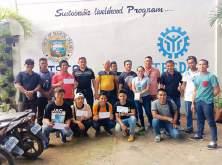
Training participants both on Driving NCI II & Automotive Servicing NC I were given the complete package of scholarship:

Allowances were released in 2 tranches, 50% on the 1st tranche and another 50% on the 2nd trance
Under the SIDA-Research, Development and Extension Program, research projects related to soil fertility improvement, varietal improvement, pest & diseases, farm mechanization and climate change resiliency were undertaken Developmental projects including propagation and distribution of high yielding varieties of sugarcane, upgrading of soil and sugar laboratories, micropropagation laboratories, and water management / irrigation were also provided to different State Universities and Colleges and industry associations

39 on-going projects
21 completed projects
24 new projects funded under the 2023 GAA
Sugarcane Varietal Improvement to Develop High-Yielding And Climate Change Resilient Varieties - University of the Philippines at Los Baños (UPLB)
Legend:
Completed
On-going

This project aimed to develop sugarcane varieties with high tonnage yield, high sucrose content with resistance to different pests and diseases and resistance to abiotic stresses A total of 112 sugarcane accessions were collected from seven regions of the country and are currently being maintained in the University of the Philippines Los Baños Parentals for breeding were then selected and were hybridized A total of ~3,500 seedlings were developed during the project Out of these seedlings, 64 hybrids were selected based on plant vigor, yield and yield-related components, response to drought, and pest and disease incidence Ten of these hybrids were trialed in three locations namely: 1) UPLB, Laguna 2) La Granja Research Training Station, La Carlota, Negros Occidental and 3) Kabacan, Cotabato After the multilocation trial, five hybrid lines were found to be promising - UPLBSC 004, UPLBSC 011, UPLBSC 013, UPLBSC 030 and UPLBSC 032 - across Luzon, Visayas, and Mindanao These promising hybrid selections were also found to be resistant to downy mildew based on field evaluation From the remaining 54 hybrid selections, 14 have been evaluated in Advanced Yield Trial and 40 in Preliminary Yield Trial in UPLB
The five (5) promising lines are recommended to be evaluated and trialed in more locations in the Philippines. The other promising selections are also recommended to undergo advance trial and selection to determine performance across the country.

Dendrogram (UPGMA) of 76 sugarcane accessions using Jaccard’s coefficient dissimilarity of 0.65.
AcceleratedTechnologyTransferProgram-PromotionandProductionofBeneficialMicroOrganism(BMO) AmongthetechnologiesintroducedinsugarcanefarmingistheuseofBeneficialMicro-Organism(BMO),amolassesbased nitrogen-fixing foliar fertilizer tailored for sugarcane cultivation. Given the escalating prices of chemical fertilizers,theadoptionofBMOoffersaviablesolutiontotheincreasingcostofsugarcaneproductionbyreducing nitrogendemandbyapproximately25to30%comparedtotraditionalchemicalfertilizers.
Inthefourthquarterof2023,atotalof153BMOtrainingswereconductedacrossvariousmilldistricts,fundedthrough SIDA-HRDP.Theparticipantstotheprogramwerethedifferentsugarcaneblockfarmsnationwide.Thematerials providedtotheparticipantswaschargedtotheSIDA-RDEfund,whichincludecontainers,weighingscales,knapsack sprayersandtheinitialBMOcultures,amongothers.
RapidPropagationofSugarcaneHigh-YieldingVarietiesintheDifferentSugarcaneMillDistrictsNationwide
27
15
605

HYV nurseries approved for implementation under 2023 GAA
HYV nurseries established which covers an area of 84 59 ha.
lacsas of canepoints distributed to 168 beneficiaries with a total expansion area of 187.56 ha.


Sustainable In-vitro Conservation of Philippine Sugarcane Varieties and Accessions at National Plant Genetic Research Laboratory (UPLB)
The project successfully managed the 142 accessions with more than five cultures each by the end of 2023 A total of 1642 cultures are under in vitro conservation, and 30 accessions are undergoing initiation and proliferation Due to older stalks in the field gene bank, some accessions were maintained in the greenhouse before in vitro conservation
Soil Characterization of the Sugarcane Mill Districts in the Philippines (BSWM)
The soil monoliths collected from Central, Norther and Southern Negros mill districts were prepared, finalized, and packaged while the Soil Series Compendium was printed and registered for publication at the National Library

During the surveys at Tolong and Bais-Ursumco Mill Districts, 13 soil series were identified which are: Calumpang, San Manuel, Binangonan, Batuan, Dauin, Faraon, Guimbalaon, Isabela, La Castellana, Mandawe, Tupi, Taal and Zamboanguita.

representatives from BSWM.

The funds for the Socialized Credit under the Farm Support Program of Republic Act No 10659 shall be made available through the Land Bank of the Philippines for the acquisition of production inputs, farm machinery, and implements necessary for the continuous production of sugarcane The program has the following target beneficiaries: (1) individual sugarcane farmers operating a farm land area of ten (10) hectares and below, (2) collective farms with consolidated area of less than 30 hectares within a 2kilometer radius (3) block farms, and (4) SRA-accredited agri-business machinery, equipment service centers

150 million
Appropriation for the Socialized Credit Program under the 2023 GAA The allocation of the appropriated budget is as follows:
PHP137.6 million to be downloaded to the Land Bank of the Philippines (LBP)
PHP12.4 million allocated for the Socialized Credit Program Management by the SRA
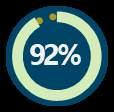


422.29 Million
Total amount approved by the Landbank of the Philippines (LBP) for 438 borrowers in 2023.
* Loan re-availment

481.70 Million
Total loans endorsed to the Landbank of the Philippines (LBP) for 856 borrowers in 2023.
* Loan re-availment

235.31 Million
Total amount released by the Landbank of the Philippines (LBP) for 654 borrowers in 2023
* Loan re-availment
A series of Financial Literacy Trainings and Sugarcane Farm Management Seminars were conducted by SRA to eligible borrowers in the various sugarcane-producing areas of Luzon, Visayas, and Mindanao
Luzon and Mindanao:

37
Total number of trainings that were conducted in various sugarcane-producing regions
Luzon and Mindanao: 9
Visayas: 28

Visayas:

1,842
Total number of participants that have attended and participated in the trainings conducted
Luzon and Mindanao: 421 Visayas: 1421

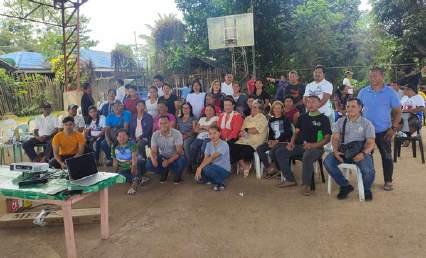


881.53 million
Total appropriation by the national government for the Socialized Credit Program (GAA 2016, 2017, 2022 and 2023)

998.43 Million

1.508 Billion
Total loans endorsed to the Landbank of the Philippines (LBP) for 4,565 borrowers

Total amount approved by the Landbank of the Philippines (LBP) for 3,200 borrowers 880.46 Million
Total amount released by the Landbank of the Philippines (LBP) for 3,156 borrowers.
COMPLETED PROJECTS
1. Agronomic Response of Phil 8013 to different Plant Growth Regulators (PGR) concentrations - MV A. Serrano, H. Tangara
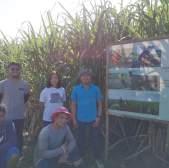
The study investigated how plant growth regulators (PGRs) affect the growth and yield of Phil 8013 sugarcane Three PGRs - Naphthalene Acetic Acid (NAA), Benzylaminopurine (BAP), and Gibberellic Acid (GA3) - were used to enhance root formation, shoot growth, and stalk elongation, respectively. Different concentrations and combinations of these PGRs were applied to the plants. In the initial growth stage, PGR treatments did not significantly affect tiller count, stalk diameter, or weight, though all treatments resulted in similar millable stalks and lengths. Yield measurements, including sugar rendement, tonnage, and sugar yield, showed no significant differences except for the control group, which had the lowest yield. In subsequent growth cycles (ratoon), PGR treatments didn't impact stalk characteristics much, and yield differences among treatments were minimal, except for specific cases with lower yields. The overall conclusion was that PGRs had limited effects on Phil 80-13 sugarcane's growth and yield, suggesting further exploration of different PGR concentrations, application methods, and timing for optimal crop performance
2. Potential Yields of Varietal Mixture Planting for Sustainable Sugarcane ProductionBG. Manlapaz, N. C. Guiyab, R,D, Locaba, R,J.Sarol and MV.A.Serrano

The study examined the efficacy of varietal mixture planting, where two or more cultivars are utilized, in context of sugarcane cultivation Due to limited nurseries and planting material supplies, some mers resorted to planting nearby varieties
research aimed to assess the potential and practicality of varietal mixture planting as a sustainable profitable strategy for the sugarcane industry Conducted under sandy soil conditions using a domized complete block design (RCBD), the study found that varietal mixtures yielded comparable ults to single variety planting One-way ANOVA analysis indicated no significant differences in sugar rendements and sugar yields between varietal mixtures and single variety plantings in both plant and ratoon crops Therefore, in instances of inadequate planting materials for specific varieties, varietal mixture planting emerges as a viable approach to achieve sustainable crop yields, based on the combinations and tested varieties in this study


3. Preliminary Yield Test of Phil 2017 series varieties - MV. Serrano, R. Sarol, H. Tangara

Twenty-eight test clones from the Phil 2017 series were assessed for their agronomic and yield performance in comparison to two check varieties, Phil 80-13 and Phil 75-44, at the Luzon Agricultural Research and Extension Center in Floridablanca, Pampanga. The study, laid out in a randomized complete block design, identified several clones, including Phil 2017-0505, Phil 2017-0849, Phil 20170873, Phil 2017-1089, Phil 2017-1321, Phil 2017-1331, Phil 2017-1557, Phil 2017-1743, and Phil 20171965, which exhibited significantly higher sugar yields compared to both check varieties, averaging 359 53 Lkg/Ha Phil 2017-0981 also demonstrated higher sugar yield than Phil 75-44 and was comparable to Phil 80-13 Additionally, the clones showed resistance to smut and downy mildew and exhibited minimal to no flowering during the study period, suggesting their adaptability to other agroclimatic conditions


4. Propagation of Phil 2014 Series Varieties - MV. Serrano, H. Tangara
Fourteen (14) selected varieties from the Phil 2014 series were planted and propagated at SRA-LAREC from March 2020 to November 2023 These varieties, including Phil 2014-0955, Phil 2014-0013, Phil 2014-0243, Phil 2014-0389, Phil 2014-0417, Phil 2014-0679, Phil 20140703, Phil 2014-0727, Phil 2014-0983, Phil 2014-1057, Phil 2014-0405, Phil 2014-0459, Phil 2014-0723, and Phil 2014-0729, were intended to serve as a source of planting materials for the National Cooperative Test/Ecological Test conducted in various locations across Luzon and Mindanao

5. Propagation of Phil 2011-13 Series Varieties - MV. Serrano, H. Tangara
Eighteen selected varieties from the Phil 2011, 2012, and Phil 2013 series were planted and propagated at SRA-LAREC from November 2019 to November 2023 These varieties, including Phil 2011-1683, Phil 2011-1121, Phil 2011-0449, Phil 2011-0899, Phil 2011-0813, Phil 2011-0237, Phil 2012-0475, Phil 2012-0537, Phil 2012-1263, Phil 2012-0455, Phil 20120483, Phil 2012-1373, Phil 2013-1495, Phil 2013-1619, Phil 2013-1667, Phil 2013-1319, Phil 2013-1287, and Phil 2013-0771, were intended as a source of planting materials for the National Cooperative Test/Ecological Test conducted in various locations across Luzon and Mindanao
6. Screening of selected Phil 2015 series varieties for Downy Mildew - J. Vicente , A. Casupanan
Planting disease-resistant varieties plays a crucial role in Integrated Pest Management (IPM). Following Resistance Trials against Smut and Preliminary Yield Tests, selected clones from the Phil 2015 Series underwent a Resistance Trial against Downy Mildew. These clones were planted in a RCBD with three replications. Downy mildew was introduced through natural infection by planting infected canepoints on the borders of blocks. Seven clones exhibited consistent high resistance until the first ratoon: Phil 15-02-0125, 27-0099, 37-0217, 114-1275, 56-0433, 216-1181, and 103-0867 Additionally, three more clones, Phil 15-02-0121, 84-0565, and 108-0921, remained resistant until the first ratoon and could be considered Phil 15-114-1275 showed the highest stool survival during the first ratoon (66 82%), while Phil 15-560489 recorded the lowest (54 59%)






7. Effect of Calcitic Lime on Cane and Sugar Yields of Three High Yielding Varieties Planted in Bukidnon Clay Soils - J. Vicente, A. Casupanan
Soil pH levels influence nutrient availability and absorption, with acidic soils often limiting the availability of major plant nutrients, leading to potential deficiencies in crops like sugarcane. This study, conducted in acidic soil (pH 4.0) in Bukidnon, Philippines, aimed to address this issue. Treatments using high-yielding sugarcane varieties (Phil 2006-2289, Phil 200-1899, and Phil 8013) with varying lime concentrations (0%, 50%, 100%, and 150%) were arranged in a strip plot design. Results indicated no significant differences in millable stalk attributes among different lime concentrations for the test varieties.
However, Phil 2006-1899 exhibited significantly heavier stalks, comparable to Phil 80-13. Additionally, yield parameters showed no significant differences among treatments or test varieties
8. Screening of selected Phil 2016 series varieties for resistance to smut - J. Vicente, A. Casupanan

Genetic resistance stands out as the most effective and cost-efficient method for controlling the spread of sugarcane smut and mitigating economic losses To identify resistant varieties, thirty clones from the Phil 2016 Series underwent resistance screening trials Canepoints were dipinoculated with smut spores and planted in a RCBD with three replications Smut incidence was monitored over seven months, and resistance levels were assessed using a standard rating scale based on percent incidence
Nine clones consistently demonstrated high to very high resistance from plant cane through the first ratoon These included Phil 16-114-1085, 85-0647, 82-0619, 78-0539, 79-0583, 79-0579, 76-0515, 93-0695, and 52-0373. Additionally, seven more clones remained resistant until the ratoon canes. Phil 16-115-1121, 104-0955, 104-0965, 99-0773, 145-1277, 78-0573, and 980755 may also be recommended for selection. The trial results will be combined with data from other variety tests to identify smut-resistant and high-yielding clones for commercialization.


9. Potential yields of varietal mixtures for sustainable sugarcane production

Varietal mixture planting involves using multiple cultivars, a strategy sometimes adopted due to limited nurseries and planting material supplies However, the response of varietal mixtures in sugarcane remains understudied This research aimed to assess the potential and practicality of varietal mixture planting for a sustainable and profitable sugarcane industry
Conducted using a RCBD in sandy soil conditions, the study found that varietal mixture planting produced comparable yields to single variety planting One-way ANOVA analysis revealed no significant influence of varietal mixture treatments on sugar rendements and yields Thus, varietal mixture planting could be a viable option during periods of insufficient planting materials for specific varieties, considering the combinations tested in this study, to achieve sustainable crop yields


10. Performance of recommended Phil 2007 and Phil 2008 series varieties to varying levels of phosphorus fertilization
This study examined the impact of different phosphorus fertilization levels on sugarcane production, focusing on cane yield, sucrose content, sugar yield, millable stalks, stalk length, and diameter in both plant cane and ratoon cane stages across three sugarcane varieties: Phil 2007-0243, Phil 2007-0221, and Phil 2008-0909 The goal was to identify the most effective phosphorus rate for enhancing growth and yield
Results indicated that treatments with "150% Ammophos" and "100% Ammophos" consistently produced the highest cane yield, sucrose content, sugar yield, and increased millable stalks, diameter, and weight for all three varieties during the plant cane stage Similarly, during the ratoon cane stage, these treatments led to the highest sucrose content, sugar yield, and millable stalks
Overall, "100% Ammophos" emerged as the optimal phosphorus fertilization rate for enhancing sugarcane growth and yield in both plant cane and ratoon cane stages across the tested varieties. However, it's important to consider other factors like soil type, climate, and additional nutrients that may impact sugarcane production.


11. Performance of Phil 2009-1969 and Phil 2007-0243 in Semi-Commercial Production
To compare the yield performance of the Phil 2007-0243 and Phil 2009-1969 in an experimental plot trials to semi-commercial scale production in both plant and ratoon cane The experimental plots, measuring 6 rows by 9 meters, and semi-commercial plots, measuring 14 rows by 35 meters, were replicated four times
Results indicated that experimental plots produced higher cane yields (TC/Ha) and sugar yields (LKg/Ha) compared to semi-commercial plots in both plant and ratoon cane stages. Phil 20091969 experienced cane yield reductions of 12.56% and 20.62%, while Phil 2007-0243 saw reductions of 10.31% and 20.37% in plant and ratoon cane, respectively. Sugar yield reductions were observed for both varieties, with Phil 2007-0243 decreasing by 30.61% for plant cane and 26.04% for ratoon cane, and Phil 2009-1969 decreasing by 20.03% and 37.28%, respectively. Sucrose content (LKg/TC) was higher in experimental plots compared to semi-commercial plots for both varieties. Phil 2007-0243 and Phil 2009-1969 exhibited decreases in sucrose content in both plant and ratoon cane stages On a semi-commercial scale, the return on investment (ROI) for Phil 2007-0243 was 0 28 for plant cane and 1 21 for ratoon cane, while Phil 2009-1969's ROI was 0 35 and 1 32, respectively It is recommended to propagate Phil 2007-0243 and Phil 2009-1969 commercially in the Pampanga Mill District due to their high yield potential and ROI



12. Evaluation of Sugarcane Varieties: Investigating Resistance and Susceptibility to Herbicides (2,4-D; Diuron; Glyphosate) at Germination and Tillering Stages

This study investigates the response of various sugarcane varieties to different herbicides (2,4D, Diuron, and Glyphosate) to optimize weed management practices while maintaining plant health Results show diverse responses among sugarcane varieties during the germination and tillering stages A significant proportion of genotypes exhibit resistance or minimal influence to 2,4-D and Diuron, indicating high tolerance However, Glyphosate application consistently impacts all varieties, with most exhibiting high to severe sensitivity
Understanding herbicide sensitivity among varieties emphasizes the importance of tailored herbicide management strategies This knowledge allows for the selection of cultivars best suited for specific herbicides, enhancing weed management efficacy, reducing crop damage risks, and improving overall yield
13 Lodging in Sugarcane Fields: Assessing its Significance on Productivity and Predicting Lodging-Induced Losses

This study evaluates the impact of cane lodging on yield and yield components of eight sugarcane cultivars in plant cane. Varieties exhibit diverse performance in terms of yield and yield components, with Phil 06-2289, Phil 6607, Phil 99-1793, Phil 75-44, and VMC 84-524 showing the highest cane yield in plant cane. Lodging affects stalk attributes, cane tonnage, juice quality, and sugar yield, leading to a decrease in cane tonnage and sugar yield by 12% and 9% in plant cane, and 38% and 7% in ratoon cane, respectively The reduction is attributed to stalk damage, rat damage, pest infestation, and poor juice quality Overall, lodging proves to be a significant limiting factor to sugarcane yield potential under sandy soil conditions




14. Row Test, Phil 2020 Series- R. G. Entima, N. S. Meneses, R. T. Armones, J. A. Benedicto, D. I. Discaya & J. T. Tamon
Stage IV of the Sugarcane Variety Improvement Program (SVIP) involves the initial planting of single-eye seed pieces of selected clones from the Single Seedling Plot Test. Promising clones are chosen based on their agronomic traits, morphology, and disease resistance From 172 bi-parental crosses in the Phil 2020 Series Single Seedling Plot Test, 667 promising clones were selected and tested in the Row Test from April 2022 to March 2023 Out of these, 303 clones with favorable agronomic characteristics, such as brix reading, average tiller per stool, average diameter, weight per stalk, and flowering observation, were chosen for the next stage of the Breeding Program, the Multiplication and Disease Screening Stage


15. Multiplication I, Phil 2020 Series- R. G. Entima & J. A. Benedicto
Stage V of the Sugarcane Variety Improvement Program (SVIP) involves Multiplication and Disease Screening, crucial for expanding planting materials and ensuring disease resistance In this stage, 330 clones from the Phil 2020 Series selected from the Row Test were multiplied (Multiplication I) and screened for smut Following SRA cultural practices, 180 clones were then chosen for Multiplication II and screened for Downy Mildew in August 2023, based on their agronomic and morphological traits
16. Multiplication II, Phil 2019 Series- R. G. Entima & J. A. Benedicto
Stage V of the Sugarcane Variety Improvement Program (SVIP) involves Multiplication and Disease Screening, crucial for expanding planting materials and ensuring disease resistance This stage aims to prepare for the Preliminary Yield Test by selecting diseaseresistant varieties
Initially, 180 clones were chosen based on Smut Resistance Trial results for the Phil 2019 Series, then propagated and screened for Downy Mildew Disease resistance From these, 30 clones proceeded to the Preliminary Yield Test, where they underwent further evaluation for Leaf Scorch, Yellow Spot Screening, and Smut verification



17. Preliminary Yield Test, Phil 2018 Series - R. G. Entima & J. A. Benedicto
The Preliminary Yield Test conducted at the SRA LGAREC, La Carlota City, marked Stage VI of the ongoing SVIP This test aimed to evaluate the yield and agronomic performance of selected sugarcane clones from the Phil 2018 Series under representative environmental conditions Thirty (30) entries from the Phil 2018 Series Multiplication II, along with control varieties Phil 80-13 and VMC 86-550, were examined
Ten promising clones were selected and recommended for further evaluation in the Ecological Test These include Phil 2018-72-0745, Phil 2018-09-0005, Phil 2018-90-0871, Phil 2018-97-0913, Phil 2018-123-1223, Phil 2018-123-1201, Phil 2018-130-1329, Phil 2018-183-1627, Phil 2018-88-0867, and Phil 2018-65-0593




18. Propagation I, Phil
- R. G. Entima & J. A. Benedicto

After Multiplication II, newly selected varieties undergo propagation to increase the availability of planting materials Promising clones are planted, cultivated, and fertilized, with insecticide and herbicide sprayed as needed Cultural practices are carefully executed to achieve optimal results Six months after planting, selected clones/varieties undergo cutback to encourage the production of canepoints These canepoints are further propagated to expand the supply of planting materials required for the Ecological Test conducted in various locations nationwide. Ratoons of these clones/varieties are also maintained and cultured to provide an additional source of planting materials.
In the specific case of the Phil 2019 Series, thirty promising clones were planted and maintained at SRA-LGAREC from March 2023 to October 2023 in preparation for Propagation II. The canepoints produced from these clones will undergo further propagation to increase the number of planting materials necessary for the Ecological Test across different locations nationwide.
19. Propagation II, Phil
- R. G. Entima & J. A. Benedicto

Varietal mixture planting involves using multiple cultivars, a strategy sometimes adopted due to limited nurseries and planting material supplies. However, the response of varietal mixtures in sugarcane remains understudied. This research aimed to assess the potential and practicality of varietal mixture planting for a sustainable and profitable sugarcane industry
Conducted using a RCBD in sandy soil conditions, the study found that varietal mixture planting produced comparable yields to single variety planting One-way ANOVA analysis revealed no significant influence of varietal mixture treatments on sugar rendements and yields Thus, varietal mixture planting could be a viable option during periods of insufficient planting materials for specific varieties, considering the combinations tested in this study, to achieve sustainable crop yields


20. Propagation III, Phil 2017 Series - R. G. Entima & J. A. Benedicto

After Propagation II, newly selected varieties undergo propagation wherein promising clones are planted, cultivated, and fertilized Herbicide spraying and manual weeding are conducted as needed for weed control Cultural practices are employed to enhance vegetative growth Six months after planting, selected clones are cut back Canepoints produced are further propagated to increase the supply of planting materials required for ecological tests in various locations nationwide Priority is given to ratooning selected varieties to ensure an additional supply of planting materials Canepoint propagation continues to meet the demand for planting materials and to propagate newly selected varieties for distribution to end-users
In the case of the Phil 2017 Series, ten selected varieties were planted and propagated at SRALGAREC from May to November 2023 as Propagation III These varieties include Phil 2017-591331, Phil 2017-64-1397, Phil 2017-54-1065, Phil 2017-34-0539, Phil 2017-56-1179, and Phil 2017-124-2093


21. Propagation III, Phil 2018 Series - R. G. Entima & J. A. Benedicto
After Propagation II, newly selected varieties undergo propagation where promising clones are planted, cultivated, and fertilized Herbicide spraying and manual weeding are conducted as needed for weed control Cultural practices are employed to enhance vegetative growth Six months after planting, selected clones are cut back Canepoints produced are further propagated to increase the supply of planting materials required for ecological tests in various locations nationwide Priority is given to ratooning selected varieties to ensure an additional supply of planting materials Canepoint propagation continues to meet the demand for planting materials and to propagate selected new varieties for distribution to end-users through the Farm Services Division

In the case of the Phil 2018 Series, ten selected varieties were planted and propagated at SRALGAREC from May to November 2023 as Propagation III These varieties include Phil 2018-720745, Phil 2018-09-0005, Phil 2018-90-0871, Phil 2018-97-0913, Phil 2018-123-1223, Phil 2018123-1201, Phil 2018-130-1329, Phil 2018-183-1627, Phil 2018-88-0867, and Phil 2018-65-0593
22. Ecological Test, Phil 2013 Series - N. S. Meneses, R. G. Entima, R. T. Armones, J. A. Benedicto, D. I. Discaya & J. T. Tamon
The project aims to assess the adaptability of newly selected varieties from the Preliminary Yield Test to specific environmental conditions for potential commercial release The study evaluated the performance of ten Phil 2013 series sugarcane varieties in five different locations, focusing on tonnage, sucrose content, and sugar yield compared to standard and local check varieties Key findings include significant differences between test and control varieties in tonnage, sucrose content, and sugar yield Phil 2013-0279 exhibited the highest mean and potential tonnage yield, while Phil 8013 had the highest sucrose content Phil 2013-0287 achieved the highest mean sugar yield, with Phil 2013-0279 leading in potential yield Sagay Mill District showed the highest tonnage and sugar yield Phil 2013-0287, Phil 2013-0249, and Phil 2013-0279 outperformed the control varieties in some locations in tonnage and sugar yield These varieties demonstrated characteristics such as high tonnage and sucrose content, sparse flowering, and resistance to various diseases These promising varieties are recommended for further evaluation by the Variety Committee
Flower

N. S. Meneses, R. G. Entima, R. T. Armones, J. A. Benedicto, D. I. Discaya & J. T. Tamon


The project aims to identify potential sugarcane varieties for breeding purposes by inducing flowering in selected germplasm. In January 2023, 65 potential varieties were planted in a suitable environment in Brgy. Mandayao, La Castellana. Out of the 65 selections, 20 varieties successfully flowered These varieties include Phil 92-010009, Phil 92-32-0577, Phil 93-1601, Phil 8013, Phil 2003-1389, Phil 2008-0909, Phil 2012-0455, Phil 2012-0483, Phil 2013-0279, Phil 2013-0287, Phil 2013-1319, Phil 2013-1453, Phil 20131619, Phil 2014-0013, Phil 2014-0085, Phil 2014-0267, Phil 2014-0405, Phil 2014-0417, Phil 2014-0451, and Phil 2016-0773


In August 2023, all maintained varieties were marcotted, and the marcotted plants with flowers were used for pollination in October-November 2023 This process aims to utilize the flowering varieties as parentals in sugarcane breeding programs

24. Downy Mildew Resistance Trial, Phil 2019 Series - R. G. Entima & J. A. Benedicto

Downy mildew, caused by Peronosclerospora philippinensis, is a significant disease affecting sugarcane in the Philippines, particularly during periods of low temperature and high humidity It can lead to substantial losses in tonnage and sugar yield In this study, 180 selected clones from the Phil 2019 series were evaluated for their resistance to downy mildew The experiment was conducted in La Granja under a RCBD with four replications VMC 86-550 was used as spreader rows to ensure natural infection Disease rating was determined using the International Rating Scale Results showed varying degrees of resistance among the test clones In plant cane, 40 clones were very highly resistant, 46 highly resistant, and 35 resistant, while in ratoon cane, 24 clones were very highly resistant, 41 highly resistant, and 43 resistant Clones with ratings of 1-4 were recommended for further testing, while VMC 86-550 consistently exhibited very high susceptibility
25 Smut Resistance Trial, Phil 2018 Series-PYT (Plant cane & Ratoon cane) - N S
Meneses & J A Benedicto

Sugarcane smut, caused by the fungus Sporisorium scitamineum, is a severe disease affecting sugarcane, leading to stunted growth and significant production losses. To evaluate the resistance of selected clones and varieties to smut, a resistance trial was conducted. Thirty clones from the Phil 2018 Series, along with control varieties, were selected for the trial. They were inoculated with smut spores and planted in a field, with data collection conducted monthly for six months, including the ratoon phase
Results showed that the majority of clones exhibited very high resistance to smut, with 29 clones showing very high resistance in plant cane and 28 in ratoon cane Only one clone showed intermediate resistance in plant cane, and one showed resistance in ratoon cane These resistant clones were recommended for further testing in ecological conditions, contributing to the selection and recommendation of new varieties for commercial planting




26. Smut Resistance Trial, Phil 2020 Series-Row Test - N. S. Meneses & J. A. Benedicto Sugarcane smut is a severe disease leading to significant stunting and production losses in susceptible sugarcane varieties. To identify resistant strains, a trial was conducted with 303 clones and two check varieties. These clones were inoculated with smut spores and monitored over six months. Results categorized 196 clones as very highly resistant, with others showing varying degrees of resistance or susceptibility. Only resistant clones will be propagated further, with plans for additional testing against Downy Mildew disease.
27. Yellow Spot Resistance Trial, Phil 2018 Series - N. S. Meneses & J. A. Benedicto Yellow spot disease, caused by Cercospora kopkei, has been a significant issue in Philippine sugarcane cultivation since its first record in 1920 It has affected various sugarcane varieties, leading to notable outbreaks such as the 1949 incident in Negros Island. The disease is particularly damaging during cool, showery weather, causing premature drying of leaves and yield reduction. Given its economic impact, screening for resistance in potential commercial varieties is essential.
In a trial involving thirty clones from the Phil 2018 series, conducted over a year from July 2022 to July 2023, different levels of resistance were observed. One clone showed high resistance, seven were resistant or intermediate resistant, eight were intermediate average, three were intermediate susceptible, one was susceptible, and three were highly susceptible to yellow spot disease



28. Leaf Scorch Resistance Trial, Phil 2018 Series - R. G. Entima & J. A. Benedicto
Leaf scorch disease, caused by Stagonospora sacchari, is a significant threat to sugarcane in the Philippines, leading to premature drying of leaves and impaired photosynthetic activity crucial for sugar formation. Each year, new clones from SRA's Breeding Program undergo testing for resistance to this disease, aiding in the selection of varieties for commercial planting. In a trial involving thirty clones from the Phil 2018 series, conducted over ten months, varying levels of resistance were observed. Six clones were very highly resistant, five were resistant, four showed intermediate resistance, while six were intermediate average and susceptible. Additionally, two clones were highly susceptible, and one was very highly susceptible to leaf scorch disease.
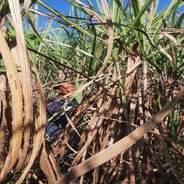

29 Sugarcane Disease Garden as Source of Inocula for Resistance Trials - N S Meneses, R G Entima & J A Benedicto
To support disease resistance studies, a one-half-hectare sugarcane field is utilized to maintain and propagate diseased clones/varieties throughout the year Seven varieties, including Phil 6111, Phil 74-64, Phil 77-79, Phil 88-39, Phil 80-13, Phil 56-226, and VMC 86-550, along with mixed clones, were ratooned from January to December 2023 These varieties serve as resistant and susceptible checks for resistance trials against smut, downy mildew, yellow spot, and leaf scorch
Phil 2022 Series - R. T.
D. I. Discaya, J. T. Tamon, R. R. Dula, V. Sernicula
During the 2022 breeding season, early flowering of parental clones and varieties occurred, peaking in late October Pollination work, carried out between October 14 and December 2, utilized 101 female and 34 male selected parents, resulting in 344 arrows harvested from 253 biparental crosses Seedlings from these crosses, sown from November 19 to December 6, 2022, showed medium to very good germination in 82% of crosses Overcrowded seedlings in 207 parental crosses were pricked into 836 seed boxes Care and management, including watering, fertilization, insecticide and fungicide spraying, leaf trimming, weeding, and cultivation, were provided to seedlings in 1,089 seed boxes prior to transplanting in May to June 2023
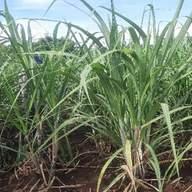


31. Single Seedling Plot Test, Phil 2021 Series- R. T. Armones, D. I. Discaya, J. T. Tamon, R. R. Dula, V. Sernicula
In the 2021 hybridization effort, 73,408 seedlings resulting from 209 bi-parental crosses were transplanted between June 11 and July 10, 2022 Of these, 44,700 seedlings from 205 crosses survived, achieving a 60 89% survival rate In April 2023, selection using Phil 56-226 as control identified 768 promising clones from 126 crosses, with a selection rate of 1 72% for seedlings and 61 46% for crosses All selected clones proceeded to the Row Test stage for further evaluation
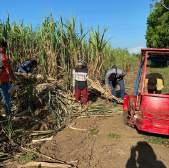



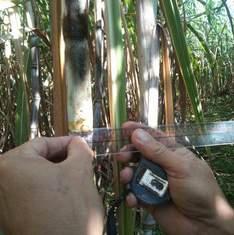
32. Morpho-Agronomic Characterization of Sugar Regulatory Administration (SRA) Plant
Genetic Resources: Development of a Dichotomous Key for Classification - D. I. Discaya et.al.
The study focuses on morpho-agronomic characterization of SRA plant genetic resources to construct a dichotomous key for systematic classification. 936 SRA resources representing diverse sugarcane varieties were evaluated for 52 traits. Statistical analyses will identify key descriptors to develop the key, aiding accurate identification This tool will facilitate resource management, utilization, and conservation, enabling differentiation based on morphological traits It also aids in germplasm conservation, informing breeding strategies for trait improvement Overall, this study enhances sugarcane genetic resource management, supporting sustainable sugar industry practices and agricultural sustainability
33 Morpho-agronomic Characterization and Molecular Screening of Putative Mutants for Desired Agronomic Traits and Sucrose Content - D I Discaya et al


The polyploid nature of sugarcane poses challenges for breeding new varieties, making mutation breeding a valuable approach to enhance genetic diversity and introduce beneficial traits In this study, putative mutants from the SIDA-funded project were screened for variation, disease resistance, and sucrose content using molecular markers. Analysis revealed high dissimilarity between mutants and source varieties, with certain mutants showing alleles associated with smut and downy mildew resistance, as well as sucrose markers. Morpho-agronomic characterization highlighted variations between mutants and source varieties, indicating effective induction of variations through gamma irradiation Further analysis via quantitative PCR is recommended before proceeding to the Preliminary Yield Test stage for selected clones
34. Assessment of Genetic Diversity of Sugar Regulatory Administration Varieties- D. I. Discaya et.al.

This study examines the genetic diversity status of SRA-released sugarcane varieties, and its implications for breeding and conservation. Using molecular markers and genotyping techniques, 200 SRA varieties were analyzed, revealing limited genetic diversity characterized by reduced allelic variations and considerable homogeneity. Population structure analysis confirmed minimal genetic differentiation and a relatively homogeneous genetic background among the varieties, indicating a constrained genetic pool
This limited diversity poses challenges for breeding programs, necessitating interventions to broaden the genetic base through the exploration of novel genetic resources and implementation of targeted breeding strategies Conservation measures are crucial to enhance the adaptability and sustainability of sugarcane cultivars, ensuring the development of resilient varieties to meet the evolving needs of the sugar industry and sustain agricultural practices
35. Molecular Characterization of SRA Germplasm Accessions - D. I. Discaya



This study focuses on the molecular characterization of SRA germplasm accessions to assess their genetic diversity and potential utility in breeding programs A diverse panel of accessions from various regions and varietal types was analyzed using molecular markers, revealing insights into allelic variations and genetic relationships. Population structure analysis identified distinct clusters and subgroups, indicating broad diversity and relatedness patterns. Key genomic regions associated with agronomic traits were identified, aiding targeted trait improvement Fingerprinting 900 accessions using diversity primers provided foundational data, suggesting the need for more primers The molecular characterization offers valuable resources for breeders aiming to develop new cultivars with enhanced traits, contributing to sustainable agriculture and food security Overall, this study enhances understanding of genetic diversity within SRA germplasm accessions and informs their strategic utilization in crop improvement for continued productivity and resilience


36. Genomics Assisted Discovery of Genes and Molecular Markers for Important Traits in Selected Sugarcane HYV’s- D. I. Discaya et.al.
This study utilizes genomics-assisted approaches to identify genes and molecular markers associated with important agronomic traits in high-yielding varieties (HYVs) of sugarcane A comprehensive genomic analysis was conducted on elite HYVs, integrating molecular and phenotypic data to develop trait-specific markers for marker-assisted selection (MAS) The study aims to accelerate breeding efforts for developing superior sugarcane varieties with enhanced performance and stress resilience DNA extraction, digestion, ligation, and vector insertion were performed on four varieties (Phil 2006-2289, Phil 8013, Phil 99-1793), followed by transformant checking and sequencing to identify putative genes The outcomes contribute valuable genomic resources and insights into trait improvement, aiding targeted breeding for enhanced yield, quality, and stress tolerance Overall, this genomics-driven approach lays the foundation for advancing sugarcane breeding strategies, ensuring sustainable production and meeting industry demands for sugar and biofuel


37. Isolation and Characterization of Gluconacetobacter diazotrophicus from Ten SRA HYV’s- D. I. Discaya et.al.
Samples of young shoots with healthy roots and buds were collected from second ratooned crossing blocks of SRA high-yielding varieties at La Granja conditions. Selected varieties were chosen based on robust growth characteristics recommended by the principal breeder. The plant samples underwent careful washing and surface sterilization before maceration and dilution in sterile sucrose solution. Diluted suspensions were inoculated onto N-free LGI semi-solid medium for growth enrichment of Gluconacetobacter diazotrophicus. After incubation, samples showing enriched growth were sub-cultured multiple times for purification Isolates were streaked on PDPA and LGI agar medium for separate colonies, backed up in test tube slants, and coded accordingly Selected colonies underwent visual characterization, biochemical assays, and molecular identification (multiplex PCR) to confirm their identity as G diazotrophicus Isolates were then sequenced for strain identification and will be used in studies involving nutrient uptake and antagonism against causal organisms of sugarcane diseases
38. Yield Performance Phil 2009-1969 and Phil 2009-0919 at Different Seasons of PlantingG. Cahilig, MT. Alejandrino, R. De Jesus, A. Alimpulos


This study was conducted at the LGAREC, La Granja, La Carlota City, from October 2021 to May 2023 to determine the yield performance of Phil 2009-1969 and Phil 2009-0919 at different seasons of planting. The varieties were planted in October (early planting), February (middle planting), and May (late planting). Yield performance of test varieties in terms of sugar rendement (LKg/TC), tonnage (TC/Ha), and sugar yield (LKg/Ha) significantly varies when canes are planted during early and late planting seasons In early season planting, the varieties obtained a significantly higher sugar yields (297 78 LKg/Ha The sugar content of canes was significantly influenced by the seasons of planting; the early season of planting maintained the highest tonnage (134 44 TC/Ha) compared to the middle and late planting season
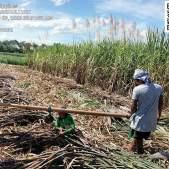

No significant variations among yields of test varieties were observed on LKg/TC Although there were no significant differences, the check variety yielded the highest (2 37 LKg/TC), followed by Phil 2009-0919 (2.35 LKg/TC), and Phil 2009-1969 (2.28 LKg/TC), respectively. On the other hand, significantly higher yields were obtained during the late season of planting with 2.56 LKg/TC compared to early (2.24 LKg/TC) and middle planting (2.23 LKg/TC.).

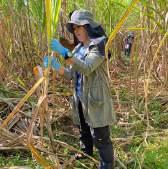
39. Germplasm Collection, Characterization and Maintenance - - D. I. Discaya et.al.
The study focuses on the SVIP’s Germplasm Collection, detailing its characterization, maintenance, and conservation. Twenty new Ecotest entries were added in 2023, and 800 varieties/clones were agronomically characterized. The collection underwent rigorous morphological, agronomic, and molecular characterization to preserve genetic diversity and support crop improvement. Maintenance protocols ensure genetic integrity through labeling, disease management, and routine evaluation. Conservation strategies include breeding programs, trait enhancement, and collaboration to maximize utilization and preserve genetic resources. The SVIP collection is crucial for sugarcane breeding, offering valuable resources for developing improved cultivars and addressing industry challenges, ensuring sustainable production and food security

at 5 lacsas per hectare (109 68 TC/HA), while the lowest was at 6 lacsas per hectare with a mean of 80 52 TC/HA
No significant interaction was observed between furrow spacing and planting density Based on the results of the study, planting 4 lacsas per hectare of Phil 2009–0919 is best suited at a 1 3-meter furrow distance, while a 1 5-meter furrow distance is suitable if an increased planting density of 5 lacsas per hectare were used Planting at a wider furrow distance of 1 8 meters could give lower yield results


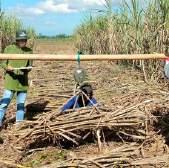
41. Response Of Phil 2009-0919 To Varying Levels of NPK Fertilization in Guimbalaon Sandy Clay Loam Soil (Ratoon Crop)- MT. D. Alejandrino, A. Alimpulos, R. De Jesus
The study was conducted at SRA-LGAREC to evaluate the response of Phil 2009-0919 ratoon crop to varying levels of Nitrogen, Phosphorus, and Potassium fertilization in Guimbalaon sandy clay loam soil. Each set of experiment had four treatments replicated four times and arranged in a RCBD. The treatments consisted of four levels of fertilization for each set: 0, 75, 150, and 225 kg N/Ha; 0, 75, 150, and 225 kg P2O5/Ha; 0, 60, 120, and 180 kg K2O/Ha.
Cane and sugar yields of Phil 2009-0919 were significantly influenced by Nitrogen fertilization. The highest cane yield was obtained at 150 kg N/Ha (93.11 TC/Ha) was comparable to 225 kg N/Ha but, significantly higher than 75 and 0 kg N/Ha. In like manner, the highest sugar yield of 229.04 LKg/Ha was observed at 150 kg N/Ha, and likewise, comparable to 225 kg/N/Ha, and significantly higher than 75 and 0 kg N/Ha The unfertilized control gave significantly lower yield Phil 2009-0919 were not significantly influenced by varying Phosphorus fertilization rates Cane yield of the ratoon crop ranged from 56 88 – 85 19 TC/Ha; while, the sugar yield ranged from 107 90-218 87 LKg/Ha


Luzon Agricultural Research Center (LAREC) and the Satellite Research Station at Central Mindanao University (CMU) propagates high-yielding varieties (HYVs) of sugarcane for distribution to or acquisition by sugarcane planters for commercial planting and other purposes. Currently, the dominant HYVs planted or ratooned in 34 hectares production sites in LAREC and around 2 5 hectares at CMU include Phil 75-44, Phil 8013, Phil 99-1793, Phil 2006-2289, and Phil 2009-1969
A total of 328 575 lacsas of canepoints were produced in 2023 and received by one hundred ten (110) planters from various mill districts in Luzon and the Bukidnon Mill District
In La Granja Agricultural Research Center (LGAREC), the total area planted with HYVs for propagation is 30 276 hectares In 2023, a total of 1,113 6 lacsa of canepoints were produced and distributed to 253 recipients There was an observed increase in demand for HYVs after the Covid 19 pandemic

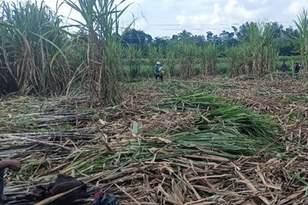
A total of 270 varieties, sourced from SRA-bred varieties (Phil series), Victorias (VMC), and Philsurin (PSR) varieties, are systematically preserved within SRA variety gardens to support various research efforts. 180 of these varieties originated from Luzon and Mindanao, while 90 varieties originated from Visayas. Additionally, two sets of variety and clonal gardens within the experimental area served as repositories for these varieties. They were maintained in both plant and ratoon cane states to facilitate comprehensive evaluation and an in-depth study.

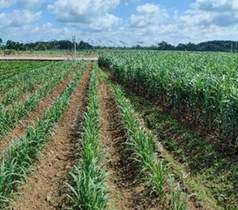


The ratoon of Preliminary Yield Tests of Phil 2015, 2016, 2017, and 2018 serves as a source of plantingmaterialsforrecommendedvarietiesinthe ECOTEST/NCTproject
The ECOTEST/NCT of Phil 2015 and Phil 2016 series varieties was laid out in 3 sites, namely, Pampanga, CARSUMCO, and Bukidnon mill districts The experiment in CARSUMCO was laid outinNovemberandpropercareandmaintenance isundertaken.Meanwhile,thepreliminaryyieldtest of Phil 2017 series varieties at SRA-LAREC resulted in average production of 359.53 Lkg/Ha from9outof28testclones
Additionally, 150 various clones, high-yielding varieties (HYVs), and check varieties were propagated by the AARD to provide planting materialsforvariousfieldexperiments.

Beneficial Microorganisms (BMO) are types of microbes that provide abundant nutrients and minerals to plants, particularly to sugarcane The microbes can colonize or compete with pathogens for nutrients and interactions within the plant and soil, thereby controlling diseases SRA's BMO, extracted from sugarcane and tested exclusively on sugarcane, serves to protect the environment by reducing reliance on synthetic fertilizers A total of 10,885 58 gallons were produced in LGAREC and distributed to 238 beneficiaries across different mill districts
Particular Total Produced (gallons) Beneficiaries




The mass production of Trichogramma spp , as a biological control agent against sugarcane stem borers, by the SRA-LGAREC has greatly benefited sugarcane planters and farmers of rice, corn, and vegetables in Negros and other parts of the Visayas region. The increasing demand from sugarcane planters demonstrates its significance as a biological control agent for stem borers, effectively preventing pest damage to crops. Trichogramma is an egg parasitoid that kills pests before they can harm plants
Supervised the implementation, management and monitoring of five (5) SIDA programs
Organize sugarcane farmers’ group
Conduct orientation, needs assessment, validation, and capability building activities
Monitor the activities of the Block Farms
Identify / validate the proposed road sections
Coordinate with concerned LGUs, Mill District
Development Councils and DPWH District
Engineering Offices
Monitor the construction of the projects
Conduct orientation among the farmers about the SCP
Consolidate and conduct initial evaluation of the completeness of loan application documents
Endorse loan applications to the Landbank
Lending Centers
Conduct Financial Literacy Trainings
Consolidate and endorse scholarship applications.
Conduct interviews and orientation of the scholars
Organize the farmers-participants of skills development trainings
Inspect and certify the proposed HYV nursery sites of cooperators
Assist in the establishment, implementation and monitoring of HYV nursery projects
The project is implemented by supplying chemical pesticides as an immediate assistance to farmers facing pestrelated challenges It aims to prevent economic losses by providing readily-available pest control support This involves acquisition of power sprayers and various chemical pesticides, which were subsequently distributed to various mill district offices Initial investigation and site inspections were conducted to assess the extent of the issue and to identify the affected areas
The Luzon and Mindanao mill districts were given insecticides and pesticides for white grubs, army worms and rodents. For this crop year, a total of 78 cooperatives/associations and individual sugarcane planters benefitted from this program.

The following were distributed to the mill districts in Visayas under the program.
Bottles of Pesticides for Army Worms
Bottles of Liquid and Kilogram granular white grubs control
Rat Bait Powder

The ATTP aims to ensure a safe and healthy workplace for the farmers. This effort aligns with the proactive response of SRA to comply with the provisions outlined in Rule 1080, also known as the “Personal Protective Equipment'' regulation set by the Department of Labor and Employment (DOLE) The program includes training for the importance and proper utilization of PPEs on various field operations, as well as the distribution of PPEs Field trial was conducted to gather inputs from the sugarcane farm workers prior to the procurement of various PPEs
In Visayas, a total of 1500 sets of PPEs were procured, inclusive of rubber boots, hats with face covers, working gloves, safety goggles/ eyeglasses. Twenty six (26) training sessions were conducted in 8 Mill Districts of Visayas, benefitting 780 beneficiaries as of December 2023.Training for the remaining districts was scheduled in 2024.
Luzon and Mindanao
2,544 IEC materials on Sugarcane production, Comics (“Mga Wastong Pamamaraan sa Pagtutubuhan”), promotion of SIDA Programs and other related brochures were supplied to the mill districts for distribution to farmers in Luzon and Mindanao.
Visayas
14,486 brochures / information materials/ manuals on sugarcane production, BMO, Soil Sampling, rapid propagation, new sugarcane HYVs, Trichogramma, Ilonggo and Cebuano Comics on Sugarcane production were distributed to the Mill Districts of Visayas






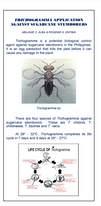




The Extension Services Division is deeply committed to enhancing and empowering small sugarcane farmers and workers to meet the evolving demands of the industry As its core function, ESD has conducted various capability building training programs aimed at empowering the industry stakeholders with the latest technologies and practices
25 OUTREACH PROGRAM FOR THE SUGARCANE INDUSTRY (OPSI) conducted with 1,006 participants
A 3-day live-in training comprised of lectures backed with multi-media presentations, practical exercises, field activities, and group discussions The training intends to provide participants with adequate start-up knowledge on sugarcane farm management and to strengthen their skills in sugarcane production
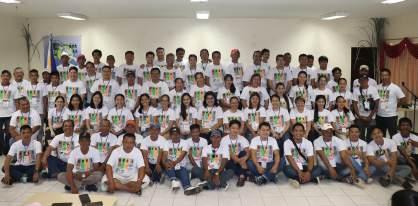

36

EXTENSION WORKER AREA (EWA) SEMINAR conducted with 1,188 participants
Two-day training course which was implemented for sugarcane farmers and farm workers and conducted as needed in mill districts. It could be upon request by the stakeholders or as quick response to any calamity in the districts
57
SUGARCANE FARM MANAGEMENT TRAININGS conducted with 274 participants
A 1-day seminar consisting topics on sugarcane production and cultural management, weed and fertilizer management, farm planning and budgeting and cost reduction measures
45
FINANCIAL LITERACY TRAININGS conducted with 1,984 participants
A seminar conducted for SCP borrowers which aims to enhance the participants’ financial management capabilities.
213
BMO PRODUCTION TRAININGS conducted with 7,814 participants
A training focused on the production of inoculant for biofertilizer BMO or Beneficial MicroOrganisms are type of microbes that provides abundant nutrients and minerals to the plants
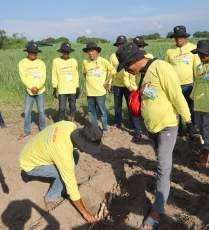

Training on Farm Machinery Operations. In 2023, the SRA-ABE Division organized training sessions on farm machinery operations to the SIDA Block Farms beneficiaries in GAA 2016-2022 and to beneficiaries of the Japan Non-Project Grant Aid (NPGA) The training encompassed tractor operations, including the mechanisms, functions, and principles of operation of farm implements, as well as management, proper care, and maintenance These sessions were assisted by the suppliers of the respective equipment The activity was initiated to optimize the utilization of the farm machineries
Assessment on the Farm Machineries Distributed to Block Farms. A total of 60 tractors and 136 implements distributed as mechanization support to block farms under GAA 2016-2019 were assessed The activity aimed to identify the challenges on maximizing the use of machineries and to devise strategies how to address issues related to utilization Interviews on the Block Farm representatives were also conducted


Farm Machinery Operation Training for Sagay and Lopez Mill District Block Farms
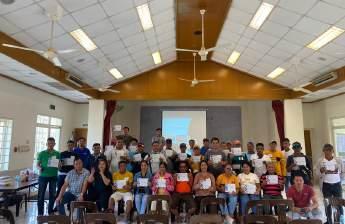
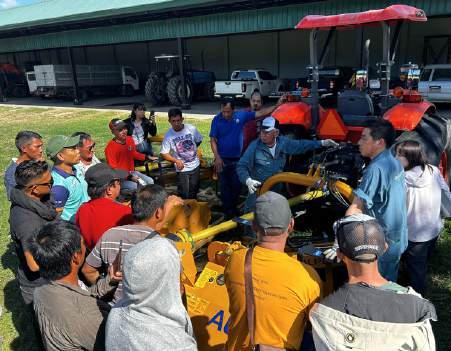
38 BF | 266 participants (Luzon)
129 BF | 607 participants (Visayas)
22 BF | 126 participants (Mindanao)
8 Associations | 46 participants (Luzon)
33 Associations |100 participants (Visayas)
Inspection and validation of completed Farm-to-Mill Road (FMR) Projects. Fifty-four (54) completed FMRs were validated to verify their compliance with prescribed specifications for sugarcane farm-to-mill road projects After the activity, it was found that the FMRs were constructed as specified in the Program of Works
Mapping of FMR. A total of 76 maps of proposed FMRs (kml/kmz) were produced for FY 2023 Mill Districts’ farm-to-mill road network maps were also updated as an input file to the National Farm-to-Market Road Network Plan 2023-2028 of the Department of Agriculture


Development of SIDA Infrastructure Monitoring System. The in-house development of system focused on monitoring and providing access to the latest updates on the implementation of infrastructure projects under SIDA was facilitated The development aims to digitalize the submission of project accomplishments, providing real-time data dashboards for easier monitoring and management access Currently, the system is being finalized
Digital Mapping and Map Generation. Generated 88 maps comprising of sugarcane area maps in accordance to area validated, yield, parcellary, district boundary and road network maps
Crop productivity monitoring. Validated a total of 50,571 39 hectares and analyzed samples from 1,547 sites for crop and yield forecast calibration for crop year 2022-2023

Data Processing and Development of the SRAWAP. Continued collaboration with DOST-ASTI to handle the downloading of satellite images and processing used in the estimation. Concurrent to this is the agreement on the development of the SRAWeb Analytics Platform.

Agro Climatic Data Monitoring. Monitored 40 Automatic Weather Stations (AWS) deployed in the mill districts Gathered agro-climatic data such as precipitation (mm), soil moisture (%vol), solar radiation (W/m2), drought index, and vegetation indexes (index) from JASMIN at 15-day intervals Training


In2016,theSRAdevelopedasystemforsciencebased sugarcane crop monitoring and yield estimation, integrating geographic information systems(GIS)andremotesensing(RS)technology. Thesystemreliesondigitizationofsugarcanefields, a geo-database, and deep learning analytics The efficiency of the tool has continuously garnered interest from stakeholders, leading to increased involvement of the private sector in the industry. Currently, the system is being used in a sciencebased policy-making of SRA in crafting the sugar policyforthecropyear.
ForFY2023,SRAhasconductedtrainingprograms coveringvariousaspectsofGISandRStechnology, includingdatacollection,mappingtechniques,and practical applications in agriculture The program aimed to disseminate the technology through empoweringindustryplayersonthesedigitalinsights. One hundred twelve (112) participants who were hiredbySRAandsugarmillpersonnelweretrained onthefundamentalsofthecropestimationsystem

The DA, through Memorandum Circular No 17, S 2023, implemented the Fuel Assistance to Farmers Project for FY 2023 This project aims to support farmers who are using farm machinery for crop production by providing fuel assistance considering that fuel expense is a significant operating cost in farming The project includes the distribution of three thousand pesos (Php 3,000 00) to the eligible beneficiaries through a Fuel Assistance Card
SRA, as machinery distributing DA-attached corporation, has validated and endorsed a total of 3,419 qualified sugarcane farmers from the mill districts nationwide to the respective DA-Regional Field Offices (RFOs) in April 2023 for subsequent processing of the DA Government Internship Program (GIP) for Agricultural and Biosystems Engineering Youth
GIP for ABE Youth is a collaborative program of the Department of Labor and Employment (DOLE) and the Department of Agriculture (DA), through the Bureau of Agricultural and Fisheries Engineering (BAFE)
The DA and its operating units, including the SRA, offers them a three (3) to six (6)-month internship program to hasten the delivery of ABE services in support to the implementation of agri-fisheries mechanization, irrigation and FMRs, postharvest facilities and other agri-infrastructure of the DA, while the DOLE is tasked with providing the interns with a stipend equivalent to the highest prevailing minimum wage in the region. It provides deployment opportunities and enhances the competencies of young Agricultural and Biosystems Engineers (ABEs) and Bachelor of Science in Agricultural and Biosystems Engineering (BS ABE) graduates.
For FY 2023, SRA deployed a total of 21 interns to its offices/stations in ABE, LAREC and LGAREC and engaged them in various activities such as sugarcane production, project site monitoring and validation, machinery field demonstration, preparation of program of works, sugarcane area validation/ calculation, mapping, machine design and drawing, and other ABE related activities




The Mill Capacity and Efficiency Assessment is being conducted to evaluate the equipment and efficiency of sugar mills In 2023, four sugar mills, namely: Pensumil, URC-CARSUMCO, Sagay Central Inc and Lopez Sugar Corp undergone this process Reports which details the findings and recommendations have been provided to the respective mill’s management.
An Impact Assessment/Post Audit is conducted three years after an initial audit to evaluate the effectiveness of the Capacity and Efficiency Audit in implementing improvements in audited mills based on recommendations In 2023, this evaluation was done at OPTION-MPC and DASUCECO, which were audited in 2018 and 2020, respectively
The SRA, thru the FSRD, has created Special Action Group for Environment (SAGE), a third party monitoring group accredited by the Department of Environment and Natural Resources - Environmental Management Bureau (DENR-EMB) SAGE offers environmental monitoring services to sugar mills, refineries and distilleries by monitoring wastewater effluents, air emissions from stationary sources, and conducts ambient air sampling The SAGE team in Quezon City serves various sugar mills in Luzon and Mindanao areas while the SRA-SAGE Team in Visayas, an accredited Third-Party Source Emission Testing Firm, provides similar services to the sugar milling industry and stakeholders in the Visayas region They conduct emissions testing for particulate matter, carbon monoxide, nitrogen oxide, and sulfur dioxide emissions, aiding companies in complying with environmental regulations and reducing pollution

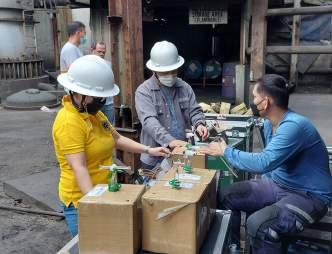

The annual publication compiles production and performance data of all operating mills in the country, sourced from their final weekly factory statements for each cropping season This publication is distributed to the contributing mills and various SRA units The publication for the CY 2021-2022 season was completed in 2023 and 56 complimentary copies have been distributed while 6 copies were sold to researchers seeking access to this data and information
The annual publication compiles production and performance data of all operating refineries in the Philippines, sourced from their final weekly refinery statements for each cropping season This data is being made available to various industry clients for downstream activities The Annual Compendium for Refining Year 2022 was completed in the 3rd quarter of the year Each of the 12 operating sugar refineries received 2 complimentary copies So far, a total of 30 complimentary copies have been distributed while 4 copies were sold
Every five years, the Factory Services and Research Division (FSRD) releases the Sugar Milling Hardware and Refining Hardware publications, which provide updated inventories of equipment of sugar factories and refineries These publications include detailed specifications of major equipment, covering modifications, improvements, rehabilitation, and new installations The data serves as a vital reference for identifying factory imbalances and guiding future operation and process-related projects In 2023, the 2022 editions were printed and distributed, providing each of the 27 operating mills and 12 operating refineries with two complimentary copies of the Milling Hardware and Refining Hardware, respectively








From January 21-31, 2023, the Philippine delegation, which included representatives from the planters' sector and officials of the Sugar Regulatory Administration, embarked on a technical cooperation mission to Brazil, the world's top producer of sugarcane The mission aimed to improve the sugarcane supply chain and address the dwindling productivity of sugarcane farms in the Philippines by acquiring knowledge of technologies applicable to the Philippine context
During the mission, the delegation visited the Federal University of São Carlos (UFSCAR), SENAI (National Service for Industrial Training), São Martinho, and GATEC-IT Solution Company The knowledge gained from these visits included Brazil’s experiences with geotechnology, pest management and integrated solutions, varietal improvement programs, phytotechnics, and production estimation, among others
The technical cooperation mission was the first step in identifying future prospects for technical cooperation between the countries through the Agence Brésilienne de Coopération/ Brazil Cooperation Agency (ABC) Among the activities that SRA aims to pursue with Brazilian institutions and experts through technical cooperation are:
Sustainable Soil Health Management
1. Effective Weed Management Technology
2. Sugarcane Farm Machinery and Equipment
3. Best Practices on Sugarcane Mechanized Harvesting
4. Biotechnology Applications on Sugarcane Breeding
5. Utilization of Beneficial Microorganisms for Sugarcane Nutrition
6. Sugarcane Varietal Exchange Program
7. Sugarcane Production Monitoring System
9
8 Climate Resiliency Intervention
10
Sugarcane Variety Multiplication using Pre-sprouted Seedlings



As the next step in the technical mission, the Brazilian delegation visited the Philippines to gather detailed information about the country's sugar and bioethanol sector, enabling future collaborations on projects that address the local industry's needs
The technical mission, held from August 28, 2023, to September 3, 2023, included a courtesy visit to the Department of Agriculture and the Sugar Regulatory Administration (SRA), a tour of SRA research facilities, meetings with key stakeholders of the Philippine sugarcane industry, and visits to sugarcane farms, sugar mills, and bioethanol distilleries During the mission, a Memorandum of Agreement was also executed between UFSCAR and Central Philippines State University to enhance agricultural research, particularly in sugarcane
During the courtesy call, the Brazilian delegation's primary recommendation was to invite a team of experts to the Philippines to facilitate knowledge-sharing initiatives aimed at expanding sugarcane plantations and promoting farm efficiency. They also recommended enhancing meal conversion, improving production chains, and lowering production costs.




Memorandum of Understanding Signing between the Central Philippines State University and UFSCAR
Source: CPSU Public Information Office
366,264 Quedans Verified/Attested
192,238 Molasses Certificates
5,939 Sugar Release Orders

Physical Sugar Stock Inventory
SMS Reports Generated
Warehouses Inventoried
156 Molasses Tanks Inventoried
20,986 Shipping Permits 272
Conducted Physical Sugar Stock and Molasses Stock Inventory for CY 2022-2023 The following were the ending stock inventory for raw and refined sugar, and molasses in CY 2022-2023:
Molasses


107,281 metric tons Refined Sugar 142,052 metric tons Raw Sugar 184,604 metric tons

25
12
License to Operate Issued to Sugar Mill, CY 2023-2024
License to Operate as Sugar Refinery Issued, CY 2023-2024
8 Bioethanol Distilleries Registered with SRA, CY 2023-2024
Sugar Production Bulletin Produced
License to Operate as Trader Issued to various local and international traders of sugar, molasses and muscovado, CY 20232024
53 Weekly Sugar Production Bulletins were produced and released as the basis for the policy-making of the Sugar Board.
Sugar Prices Monitoring in Metro Manila (Please see monitored sugar price in page 61 of this report)
Continuous monitoring of sugar prices in Metro Manila conducted in 7 Public Wet/Dry Markets, other groceries and supermarkets
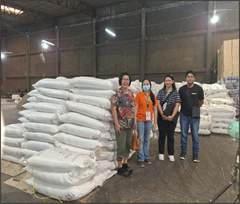
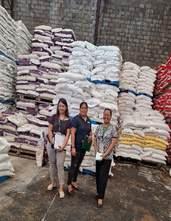

Issued for the Sugar Import Program under Sugar Orders No. 6 & 7, s. 2022-2023 and SRA Memorandum Circular No. 5, s. 2023



From October 3-5, 2023, the 16th Annual Sugar and Ethanol Asia Conference was held in Bangkok, Thailand. The yearly occasion gathered regional sugar and cassava millers, ethanol and biofuel producers, as well as international buyers, traders, and industry professionals from both the Asia and around the globe. During the event, Atty. Guillermo C. Tejida, III served as a speaker for the topic “Philippine Sugar Balance ” The talk showcased the past five (5) crop years historical sugar balance, for both raw and refined sugar, as well as imported raw and refined sugar



Last 24-27 October 2023, the Food and Agriculture Organization of the United Nations (FAO) organized the 10th Global Bioenergy Week This event was hosted by the Ministry of Energy of Thailand and participated by bioenergy experts, decision-makers, and private sector representatives to discuss bioenergy's current trends, future prospects, and challenges The following were the highlights of the event:
Updates on Asia-Pacific market trends and the market potentials for biofuels and bioethanol
Opportunities for Asia-Pacific countries including the Philippines to update or reintroduce their regulations and address challenges in the biofuels and bioethanol sectors
Deliberation on current trends, future prospects, and challenges within the bioenergy sector
Recognized the need for the Philippines bioethanol sector to not only limit its feedstock sources on molasses from the sugarcane industry but also other sources like cassava as seen in countries like Vietnam and Thailand.
Discussion on the Philippines' bioenergy strategy, specifically its ambitious goal outlined in the Philippines E20 roadmap as presented by the representative from the Department of Energy (DOE).



1,144 samples analyzed

Environmental Laboratory
1,298 test certificates issued 747 raw sugar
molasses 20 muscovado sugar 47 cane juice and other agro-industrial samples
154 of the 734 raw sugar samples were weekly composite from sugar mills for analysis on whether it passed the PNS for raw sugar (PNS 81:2018).
Integrated Laboratory Services
228 white sugar samples analyzed
268 test certificates issued
166 of the 228 white sugar samples were weekly composite from sugar refineries for analysis on whether it passed the PNS for white sugar (PNS 82:2018)


The Quezon City and Bacolod Environmental Laboratories of SRA were assessed by the DENR and were found compliant with the performance and other technical requirements under DENR Administrative Order No 63, Series of 1998 Both laboratories were assessed for new parameters, the Quezon City Laboratory was assessed for PM 2.5 and CO while the Bacolod Laboratory was assessed for pH and temperature.
2,836 samples analyzed
261 test certificates issued 1,198 air emission samples 1,638 wastewater samples
Premix Commodity Services
6 premixes, concentrates & other food products analyzed
Agro-based Laboratory
6,759 samples analyzed
2 test certificates issued
1,964 clients served 5,759 soil samples 1,000 juice samples
RECOGNITION FROM ERA
Environmental LaboratoryQuezon City was awarded a certificate as Laboratory of Excellence by Environmental Resource Associates (ERA) for their exceptional participation in the Proficiency Testing (PT)


Pursuant to the new Chemistry Law, only firms, corporations and government agencies, duly authorized by the Board, that hold a valid certificate may operate a chemical laboratory or engage in the practice of chemistry or chemical analysis in the Philippines
The SRA has complied with the requirements of the Professional Board of Chemistry for the renewal of the Certificate of Authority to Operate (CATO) a Chemical Laboratory.


Attendance to the 33rd International Commission for Uniform Methods of Sugar Analysis (ICUMSA) Session in Vienna, Austria on June 12-14, 2023 Two of the staff from the Laboratory Services Division participated and were included as Associate Referees on General Subject (GS)-1-SpecialtySugars
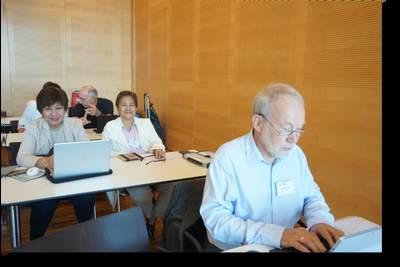
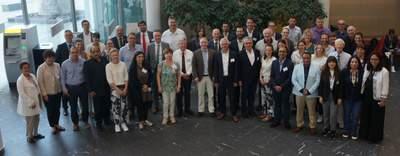
TheprojectaimstoaligntheanalyticalproceduresandmethodsoftheSRASugarLaboratoriesandsugarmill andrefinerylaboratories Inlinewiththis,eightsugarmillandsixlaboratorieswerevisited Theseriesofvisitsto the sugar mills and refineries have received positive feedback from the facilities visited as they continue to improve their laboratories and opportunity to have their analysts trained and observed the SRA laboratory facilities




Two (2) audit engagement reports prepared on the RDE project “Adopt A Small Sugarcane Farming Family”
Infrastructure Projects of Bacolod and LGAREC (COB and SIDAfunded projects)
Audit of supplies and equipment utilization and issuance to SRA Officers and Employees
Follow-up audit on Training/Seminars of SRA Employees
Four (4) Audit Rejoinder report submitted
Other audit activities
Leave credits of 39 employees
163 Sugar Withdrawal Reports/Liens Collections
149 Statements of Assets, Liabilities, and Net Worth (SALN)
Fourteen (14) reports/inputs/comments prepared and submitted related to Audit of System/Process Compliance to SRA Rules and Regulations
Implementation and Maintenance of SRA QMS Aligned with ISO 9001:2015 Standards


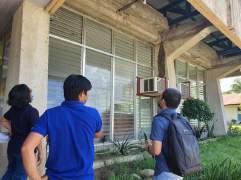
Consolidation of Monthly Performance Reports and Measurement, Monitoring Evaluation andAnalysis
The IAD processed, consolidated the process performance of each department interpret the result thereof, for topmanagementreviewandconsiderationforprocessimprovement.
Processed, documented, and implemented Documented Information aligned with ISO 9001:2015Standard
Two hundred thirty one (231) SRA QMS required reports processed, reviewed, implemented and reported severaldocumentsandrecordstoensureitsrelevance,adequacyandavailabilitywhenevernecessarytoguide the Management and process owners in matters related to quality, improvement, compliance and client satisfaction.
SRA-BacolodQMSBriefing
An awareness meeting through the Presentation of SRA QMS QC implemented QMS core process in order to assisttheminthefacilitationoftheinitialkick-offactivityinpreparationfortheISO9001:2015certification.



TUV Rheinland Philippines Inc. conducted the re-certification Audit on SRA-implemented Quality ManagementSystem(QMS)alignedwithISO9001:2015requirementslastMarch7,2023.Theresultofthe audit revealed that SRA is generally compliant with ISO 9001 requirements and passed the Certifying Body audit with reported Zero (0) Non-conformities. TUV Rheinland Philippines has recommended the ISO 9001 recertificationofSRA.

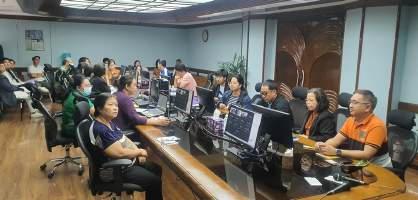
InthePre-IQA,apreliminaryreviewofIQAundertakingwasmadeamongtheemployeesandmanagement. This is an initial assessment of management’s compliance on the action taken and implementation of previousauditfindingsandrecommendations. IADconductsanIQAprocessimplementationaudittogauge compliancetoQMSimplementation.

ThiseventservedasavenuetoreviewandevaluatetheeffectivenessoftheSRA-establishedManagement System, ensuring that all levels of management are aware of the changes, revisions, and updates to the system. Additionally, it provided an opportunity to further discuss the risks and opportunities that may have majorimpactsonitsoperation.

TheGovernmentofJapanhascommittedatotalamountof800millionYenfortheimplementationofthe“Farm MechanizationProgramForSmallSugarcaneLandholders”projectinthePhilippines. Thegrantwasintendedfor the procurement of farm tractors and implements to be distributed to farmers organizations with membership composedofatleast50%smallsugarcanelandholdersasfollows:
80unitsoftractor
48unitsofsugarcaneplanter
48unitsofflailmower
5unitsofpowerharrow
TheCrownAgentsofJapanandToyotaTsushoCorporation
TheprocurementagentofmachinerieswhichwascommissionedbytheGovernmentofJapanistheCrownAgents ofJapan. ThewinningsupplierofthemachineriesistheToyotaTsushoCorporation.
DeliveryofFarmMachineries
ThedeliveriesoftractorsandsugarcaneplantersstartedinAugust2023,andasofDecember31,2023,deliveries ofthe48unitsoftractorsand48unitsofsugarcaneplanterswerealreadycompleted.
Theceremonialhand-overceremonywasconductedinNovember18,2023forthebeneficiariesoftheprogram heldinBacolodCityNegrosIsland.ThisceremonywasattendedbytheDASecretaryFranciscoTiuLaurel,the JapanFirstSecretaryandAgricultureAttachéattheJapaneseEmbassyinthePhilippines,Mr.JumpeiTachikawa, GovernorofNegrosOccidentalMr.“Bong”LacsonandBacolodCityMayorAlbeeBenitez.
OnNovember22-23,2023thebeneficiariesfromVisayasreceivedtrainingfromthesupplierofmachinerieson the properhandlingofthepartsofthemachineries,itsoperationandmaintenance. WhilebeneficiariesinLuzonand MindanaoweretrainedonDecember1,2023.






Theproposalentitled“FeasibilityStudyontheEstablishmentofaSugarcaneMillDistrictintheProvinceof Masbate” was submitted to the Department of Agriculture - Project Development Service (DA-PDS). After its evaluation,theproposedprojectwas includedinthefirmpipelineforpossiblefundingassistanceintheconductof feasibilitystudyunderanyfacilitythatshallbemadeavailableintheDepartmentofAgriculture.Asaninitialstep,the SRA will collaborate with the Bureau of Soils and Water Management for the conduct of rapid assessment of soil suitabilityin theprovinceofMasbate.
DiversificationofFeedstocksfortheBioethanolSectorinthePhilippines
This project was endorsed by the Ethanol Producers Association of the Philippines (EPAP) to SRA for funding. It aimstoassesstheviabilityofdiversificationoffeedstockssuchassugarcane-based(rawsugar,sugarcanesyrup, molasses,andrectifiedspirit)andnon-sugarcane-based(nipasap,corn,sweetsorghum)feedstocksforbioethanol production.This projectwill be helpful in policy-making to use alternative feedstocksforbioethanol productionthat willsupplythedomesticrequirementsofbioethanol.
TheprojectwascommissionedtotheUniversityofthePhilippinesLosBañosasimplementorandwillbeconducted fornine(9)months,fromAugust2023toMay2024. TheprojectfundwastakenfromtheBRDElienscollectedfrom thebioethanolproducers.
As part of the Agency’s commitment to continuous improvement and as an integral component of SRA’s Performance Scorecard, the Customer Satisfaction Survey for 2022 was conducted in 2023 by the Development AcademyofthePhilippines
91%

farmers were generally satisfied with SRA’s services in 2022 96%
Regulated entities were recorded to be very satisfied with the SRA’s services
The PPSPD facilitated the consolidation and submission of requirements of SRA’s scorecard for the year 2022 The accomplishments and rating were validated by the GCG and SRA obtained an overall score of 85 34%
The Performance Agreement Negotiation for 2024 Performance Scorecard was deliberated by the SRA and GCG during the Technical Panel Meeting held in December 14, 2023 Finalization and signing of 2024 PAN shall be held in the following year

PPSPD spearheaded the conduct of the 2023 Mid-year Performance Assessment and 2024 Operational Planning whichwasheldfromAugust29toSeptember1,2023attheBayleafHotel,GeneralTriasCavite.
All operating units including the SIDA programs Technical Working Groups were able to present their mid-year accomplishments, program implementation issues, and catch-up plans. This exercise paved the way for the discussion on how the internal processes could further be improved to ensure a more efficient implementation of SRAprograms.
Further, each unit also presented their respective operational plans for 2024 and crafted their performance contracts where the PAPs were anchored on the Department of Agriculture’s Thrusts and Strategic Agenda and SRA’sPerformanceScorecardwiththeGCG.


PREPARATIONOFSRA’SFY2024PLANANDBUDGETPROPOSAL(PBP)
ThetotalproposedbudgetoftheSRAfor2024isP1,937,282.00. Theconsolidatedproposal,Tier1andTier2, as submitted and presented to the Department of Agriculture, House of Representatives and Senate of the Philippines isanchoredtotheDepartmentofAgriculture‘sstrategicagenda:
Strategic Agenda 2: Ensuring accessibility to affordable, safe, and nutritious food that benefit all Filipinos

Strategic Agenda 3: Developing strong,
Modernized testing/analytical laboratories for sugar and agro-allied by-products to conform with the national quality standards
of farmers by avoiding post
losses due to bad conditions of farm to
Modernized sugarcane research facilities for researchers to provide high quality research outputs needed by the sugarcane industry to improve its productivity
Strategic Agenda 3:
Engagement of youth in agriculture
Improved economic/ living conditions of the underprivileged sugarcane farmers/workers
Highly skilled sugarcane farmers and technical personnel translated to adoption of advanced farming technologies to reduce cost and increase their income
Strengthened interface between research and extension - faster adoption of technologies by farmers
& Deployed
Synopsis of Raw Sugar Production System - used to manage data gathered by the Factory Research and Services Department from the sugar mills and refineries
Library System - enables seamless storage, retrieval, and archival of documents, which can be accessed by all departments to enhance the accessibility of historical data

information systems development SIDA System - This system contains sub-systems on the different programs under the Sugarcane Industry Development Act (SIDA). The system will create a database for the storage, restoration and generation of SIDA reports for the SRA website It is 70% completed
Price Monitoring System - This system contains monitoring reports of the prices of sugar from the grocery, supermarket, markets and mill sites. It is 50% completed.



Administrator Pablo Luis Azcona served as a keynote speaker during the Thailand Sugar Conference 2023 held in Khon Kaen International Convention & Exhibition Center, Khon Kaen Thailand last September 14 - 15, 2023. With the theme “Sweet Prospects for Asia’s Sugar and Ethanol Industry as a New Chapter Begins”, the conference brought together experts from around the world to discuss the latest developments in the sugar and bioethanol industry. Aside from the technical discussions, the two-day conference also featured an exhibit showcasing the latest technology & researches from different leading companies and institutions.

Administrator Azcona discussed the current situation of the Philippine sugarcane industry, and highlighted SRA’s programs and initiatives to continuously advance the local industry The Administrator also presented SRA’s roadmap which illustrates the milestones that SRA envisions for the industry to achieve until 2040
The Global Sugar Industry Price, Trends and Forecasts was also presented by the representative of the Thailand Office of the Cane and Sugar Board. Speakers from Thailand, Vietnam and Indonesia also discussed the developments and prospects in their respective sugar industries.
Other delegates from SRA include Board Member David Andrew Sanson, Executive Assistant Juan Andres Corro, PPSPD Manager Digna Gonzales, and Planning Officer Anne Kristine Dilay.





The Legal Department represents the SRA in various judicial and other administrative tribunals as its Internal Corporate Legal Counsel to defend, secure and protect SRA’s proprietary and corporate rights, interests and properties The Department also has investigative and adjudicatory services It acts upon verified complaints filed about SRA officers and employees on matters arising from all disciplinary and non-disciplinary administrative cases
103 Legal Opinions issued to the SRA Management, the Sugar Board and other SRA Operating Units

Contracts drafted, reviewed and notarized
10
Representations of SRA in pending cases before various courts and tribunals with the guidance and in collaboration with the Office of the Government Corporate Counsel (OGCC)
The Legal Department also took charge in securing or sealing SRA’s ownership over its properties It also rendered its assistance, in collaboration with the Administrative and Finance Department, in seeking clarification with the Governance Commission for GOCCs (GCG) with regard to the proper implementation of the Compensation and Position Classification System (CPCS)


Quezon City
The AFD provides direction in policy formulation and planning on matters pertaining to financial and administrative management of SRA
The Department has three (3) Divisions in Quezon City namely; the Accounting Division, Budget and Treasury Division and the General Administrative Division While its counterpart in Bacolod City is composed of two (2) divisions; the Administrative Division and Finance Division
Consolidated budget proposals of each Department and prepared budgetary forms submitted and facilitated the approval of the Corporate Operating Budget (COB). The DBM approved the SRA 2023 COB in May 2023.
2,391,627,000
2,310,641,000
Prepared and submitted the budgetary forms for FY 2024 SIDA budget proposal, in coordination with the Planning, Policy and Special Projects Department The breakdown of the FY 2024 approved appropriations is broken down as follows:

Harmonization of accounting systems was initiated during the AFD Strategic Planning Workshop were the processes of the division were evaluated and revised for future implementation Initiated the training (conducted by the HRS) of Special Disbursing Officers (SDO’s) to enhance their knowledge on procedures and rules involving utilization and liquidation of cash advances
4,523
Disbursement Vouchers processed for payments to suppliers and other claims
Financial reports submitted to the Commission on Audit (COA)

The General Administrative Division supervised and conducted the following activities in 2023:
Fire Drill seminar
Earthquake Drill seminar
Standard First-Aid and Basic Life Support Training/Seminar
Health and Wellness Program (Sports Fest)
SRA employees were provided with the Annual Physical Check-up, which included flu vaccination and drug test

Human Resource Section
57
personnel hired and promoted
In 2023, a total of 57 personnel were appointed or promoted (Luzon- 22, Mindanao-3, and Visayas-32) to different vacant positions by the Merit, Promotion and Selection Board Currently, there is a total of 271 personnel with permanent positions in the SRA
Facilitated the attendance of SRA employees assigned in Luzon and Mindanao to 78 different trainings/ seminars/ workshops/ conventions
15 SRA employees assigned in Luzon and Mindanao were cited for the “Gawad ng Katapatan” award under the PRAISE for having rendered 15 and 25 years in government service
162 permanent personnel in Visayas
109 permanent personnel in Luzon and Mindanao
Records Section
1,271

official documents released to various government agencies and private institutions
18,564
information materials and correspondences disseminated to SRA employees
Released forty-two (42) Circular Letters and nine (9) Sugar Orders, twelve (12)
Memorandum Circulars, three (3) Memorandum Orders.
Property & Procurement Section
Processed a total of 2,896 purchase requests and job requests

Conducted the Annual Physical Inventory and One-Time Cleansing of PPE, in collaboration with the Accounting Division, at various Units of SRA and its satellite offices
Transport & Building Maintenance Section
7 renovations and minor repairs of SRA premises

Construction of covered walkway, roofing projects, and installation of handrails
Processed the documents for registration of 16 motor vehicles with the Land Transportation Office (LTO) and its insurance with the Government Service and Insurance System (GSIS)

The building insurance of SRA was renewed

The AFD Visayas conducted two (2) performance assessment activities; A Mid-year Assessment & Budget Review was held on July 13-15, 2023, to assess and address each unit’s various issues and concerns specifically on SRA’s low budget utilization The activity yielded strategies on digitalization, budget realignments, and catch-up plans to meet the demands of the office
A Year-End Assessment/2024 Activity Planning was held on December 14-16, 2023 The year-end assessment evaluated the Department’s performance and the challenges encountered in the effective delivery of its services The AFD Visayas also mapped their plans and activities for 2024
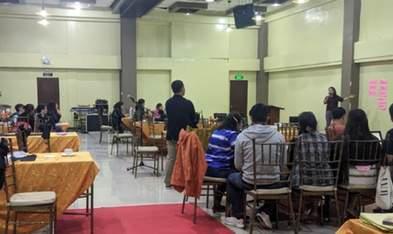

To promote the overall health of all SRA Visayas employees after the bout with the pandemic, the AFD spearheaded a sportsfest activity. The activity has further improved the mood and energy levels of SRA personnel by reducing stress and anxiety. In addition to promoting overall health, the sportsfest also fostered camaraderie among employees through teamwork.



Property/Procurement/Building and Transport Maintenance Section (PPBTMS)
For 2023, the PPBTMS implemented a significant project on digitalization which aims to automate its business processes and procedures to reduce duplication and redundancy. Since accountability is essential in government transactions, through the enactment of SRA Administrative Order No. 4, series of 2023, “Policies and procedures in the procurement of Goods and Services through Alternative Methods of Procurement in SRA Visayas, the PPBTMS was able to achieve significant improvements in terms of work efficiency and transparency
Overall effectiveness that were noted include:
Minimal errors in procurement documents

Easy data access to warehouses where end-users are able to access information in relation to procurement and property management.
Clear tracking and recording of procurement activities.
The HRS adopted digitization of the Sugar Web Portal-Human Resource Information System developed by the MIS Visayas which has improved the processing of employee’s data/information for HR related purposes
Facilitated six (6) seminars/trainings/workshops attended by 590 SRA personnel. The subject matter of the trainings were the Code of Conduct and Ethical Standards for Public Officials and Employees, Omnibus Rules on Appointments and Other Human Resource Actions, Basic Leave Administration and Seminar on Post-Pandemic Stress Management.
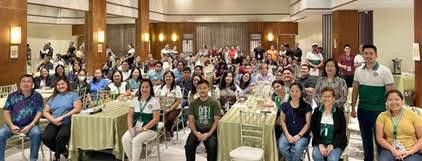

Spearheaded the awarding of “Gawad ng Katapatan” plaque to 19 employees and six (6) tokens to retiring employees.

Disseminated 29,652 various documents ranging from Memoranda, Sugar Orders, Circular Letters to the different units of SRA Visayas and industry stakeholders.
Adopted the use of QR Code in the Document Archiving System for easy and efficient retrieval of documents and the use of recalibrated alphanumeric coding per Department which helps in the uncomplicated retrieval of documents (hardcopy), creation of new files/folders as well as removal of redundant ones, further increased the Record Sections productivity.


Collaborated with MIS programmers to develop a web-based accounting system for deployment in 2024 Facilitated and kept records of payments of transactions in Visayas
TheBTStransitionedfromNGA’slocaldatabasetoweb-basedreportinginJune2023,pavingthewaytoan easierandeffectivemonthlyreporting,monitoringandreconciliationsofutilization
TheBudgetUnitcateredtovariousbudgetrequestssuchasrealignments,supplementalbudgetand obligationrequests:
6,668
Obligation requests processed

The SRA GAD Agenda is a 6-year (2024-2029) long term plan of the agency which lays out the action plans of the Agency to close the gender gaps between women and men in the sugarcane industry through effective and efficient gender mainstreaming
The goals embodied in the Agenda are as follows:
1
2.
To strengthen gender mainstreaming in the Agency amidst changing and emerging situations;
To improve access of women, children and marginalized sugarcane stakeholders to benefits and opportunities from SRA’s programs, activities and projects; and
3.
To strengthen the GAD consciousness of the Agency’s internal and external stakeholders toward a genderresponsive sugarcane industry.
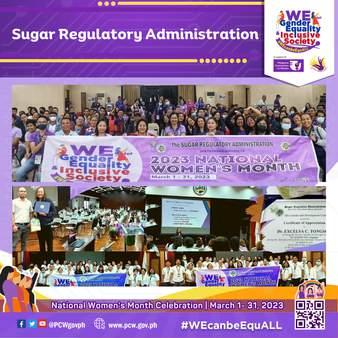
The SRA participated in the annual celebration of National Women's Month (NWM) spearheaded by the Philippine Commission on Women (PCW). This celebration honors women and their contributions to nation building. The NWM reminds the protection promotion, and fulfillment of women's rights, enabling them to maximize their potential and welfare, and make them agents of the country's development This celebration coincides with the worldwide observance of International Women's Day
OBSERVANCEOFTHEGIRLCHILDWEEK,19THWOMENWITHDISABILITIESDAY,AND18-DAY CAMPAIGNTOENDVIOLENCEAGAINSTWOMEN
TheSRAexpresseditssupporttothecelebrationofthe2023GirlChildWeek,pursuanttoPresidential ProclamationNo 759,Seriesof1996,whichdeclareseveryfourthweekofMarchasthe“Protectionand Gender-FairTreatmentoftheGirlChildWeek.Italsojoinedincelebratingthe19thWomenwithDisabilitiesDay onMay27,2034,whichhadthetheme“WEforGenderEqualityandInclusiveSociety”Italsoobservedthe18dayCampaigntoEndViolenceAgainstWomenfromNovember25,2023uptoDecember12,2023



CONDUCTOFSEMINARSANDTRAININGONGENDERSENSITIVITY,ANTI-VIOLENCEAGAINSTWOMEN ANDCHILDREN(RANO.9262),SAFESPACESACT(R.A.NO.11313)ANDANTI-CHILDLABOR(RA NO.9231)
Atotalof236participants,mostlyfarmers,farmworkers,andmillworkersfromthemilldistrictsofCarsumco, Isabela,Balayan,Tarlac,Bukidnon,andPensumil,weretrainedongendersensitivity,anti-violenceagainst women,andsafespacesInaddition,8blockfarmsintheVisayasreceivedtrainingongendersensitivity,antiviolenceagainstwomenandchildren(VAWC),andanti-childlaborlaw.

The SRA is committed and dedicated to provide responsive and sustainable development programs that will uplift the socio-economic and environmental conditions of all its stakeholders and society as a whole. For the year 2023, the SRA CSR Committee carried out activities which benefitted the impoverished sector of the sugarcane industry in support and in partnership with the Local Government Units of the area
An Outreach Program was organized by SRA to distribute food packs and 25-kilo sacks of rice to sugarcane farmers affected by the closure of Central Azucarera de Don Pedro in Western Batangas. The most affected by the closure of the mill are small sugarcane planters and CARP beneficiaries. From August 1517, 2023, the SRA Team, headed by the AFD Manager, Mr. Marco D. Soriano and some SRA personnel volunteers, doled out a total of 597 food packs and sacks of 25 kilos of rice to sugarcane farmers located in Nasugbu and Calatagan in Batangas, and in Magallanes, Cavite.
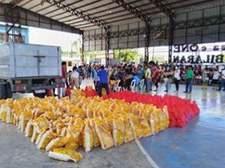








Medical and Legal Missions were held in Maramag, Bukidnon and La Carlota City, Negros Occidental on September 14, 2023 and September 28, 2023, respectively. The program in Bukidnon was graced by Mrs. Audrey Zubiri, who represented Hon. Jose Maria Zubiri Jr., Congressman of the 3rd District of Bukidnon. Meanwhile, the program in Negros Occidental was graced with the presence of the Brgy. RSB’s Punong Barangay Hon Socrates M Guba and La Carlota City Mayor Rex R Jalando-on The medical and legal missions were made possible with the participation and cooperation of SRA’s partner agencies, volunteer doctors, the CSR TWG and Secretariat and SRA personnel volunteers
The volunteer doctors conducted check-ups and prescribed the necessary medicines that were on-hand to 1550 identified block farm association members and residents of Maramag, Bukidnon and La Carlota City, Negros Occidental Hygiene kits were also distributed to a thousand recipients
Atty Jose Fernando Cuenca from SRA, who led the Legal Mission, also gave legal assistance to a total of thirty-five (35) individuals for both venues
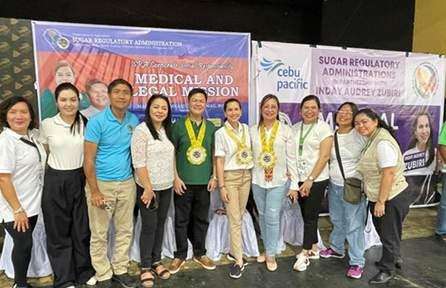
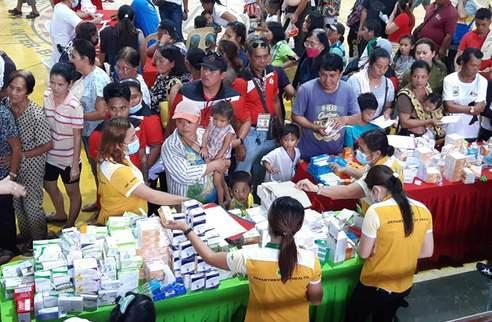




Francisco Tiu Laurel, Jr.
Department of Agriculture Secretary and Chairman of the Board (+632) 8928-8741 to 64/ (+632) 8273-2474
Email: osec@da.gov.ph
Pablo Luis S. Azcona
Administrator and CEO (+632) 8926-2928/ (+632) 8929-3633
Email: srahead@sra.gov.ph
David Andrew L. Sanson
Board Member-Planter’s Representative
Email: board.planter@sra.gov.ph

Ma. Mitzi V. Mangwag
Board Member-Miller’s Representative Email: board.miller@sra.gov.ph
Jay Andrew T. Adrias
Department Manager III, Internal Audit Department (+632) 8929-6131
Email: jay.adrias@sra.gov.ph
Atty. Ronald E. Rimando
Department Manager III, Legal Department (+632) 8236-0063
Email: portrimando@sra.gov.ph
Digna D. Gonzales
Department Manager III, Planning, Policy and Special Projects Department (+632) 8929-6137
Email: edna.gonzales@sra.gov.ph
Atty. Brando D. Noroña
Deputy Administrator II for Administration and Finance (+632) 8929-7187
Email: bran.norona@sra.gov.ph
Marco D. Soriano
Department Manager III, AFD - Luzon and Mindanao (+632) 8929-6471
Email: marco.soriano@sra.gov.ph

Atty. Johana S. Jadoc
Department Manager III, AFD - Visayas (+6334) 435-3557
Email: jo.jadoc@sra.gov.ph
Atty. Guillermo C. Tejida III
Deputy Administrator II for Regulations (+632) 8926-4493
Email: third.tejida@sra.gov.ph
Arnulfo L. Jacobe
OIC, RD - Luzon and Mindanao (+632) 8929-9223
Email: arnold.jacobe@sra.gov.ph
Wilfredo R. Monares
Department Manager III, RD - Visayas (+6334) 434-1470
Email: fred.monares@sra.gov.ph
Atty. Ignacio S. Santillana
Deputy Administrator II for Research, Development and Extension (+632) 3455-8615
Email: nene.santillana@sra.gov.ph
Engr. Laverne C. Olalia
Department Manager III, RDE - Luzon and Mindanao (+632) 8236-0001
Email: laverne.olalia@sra.gov.ph
Helen B. Lobaton
Department Manager III, RDE - Visayas (+6334) 433-6887
Email: helen.lobaton@sra.gov.ph

